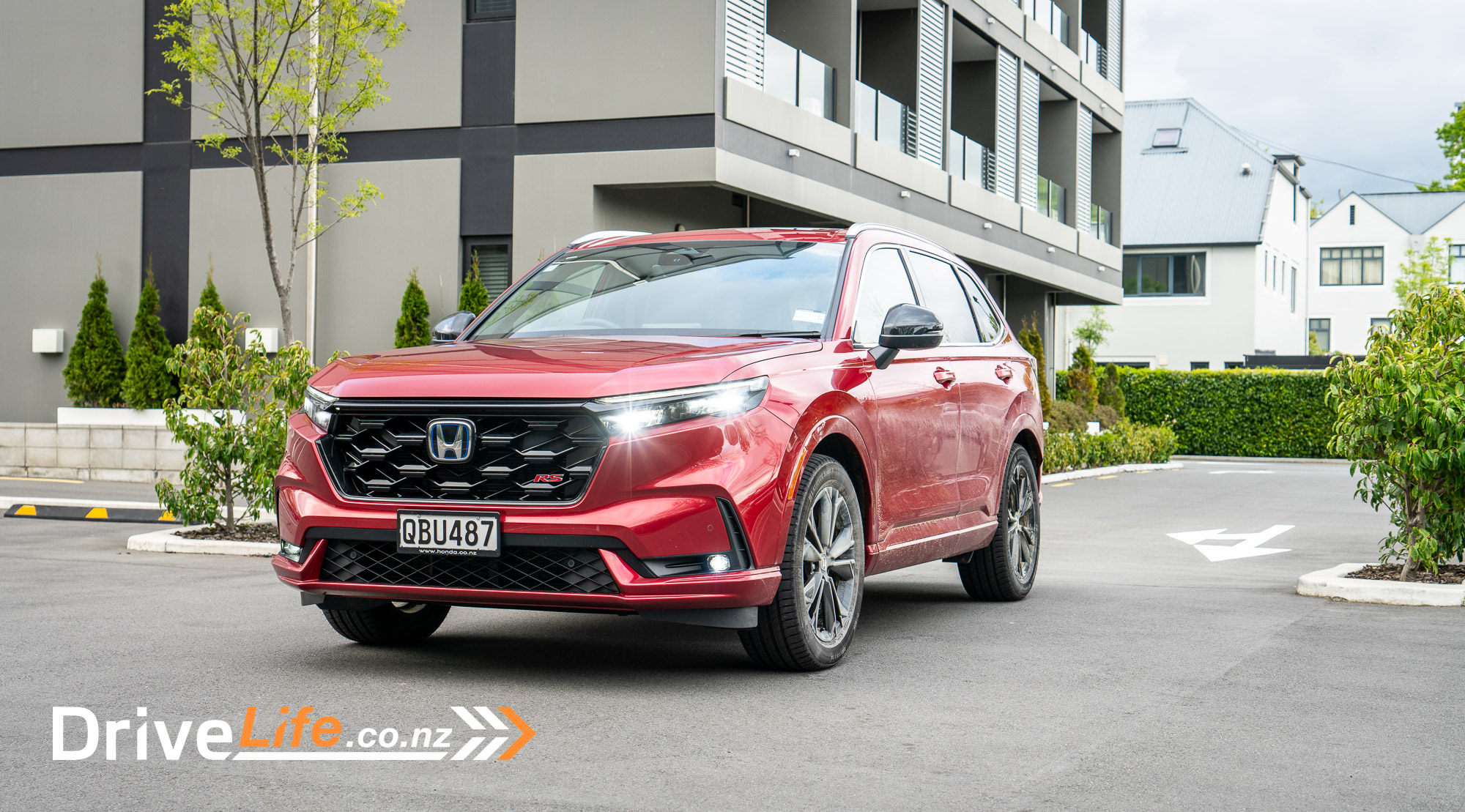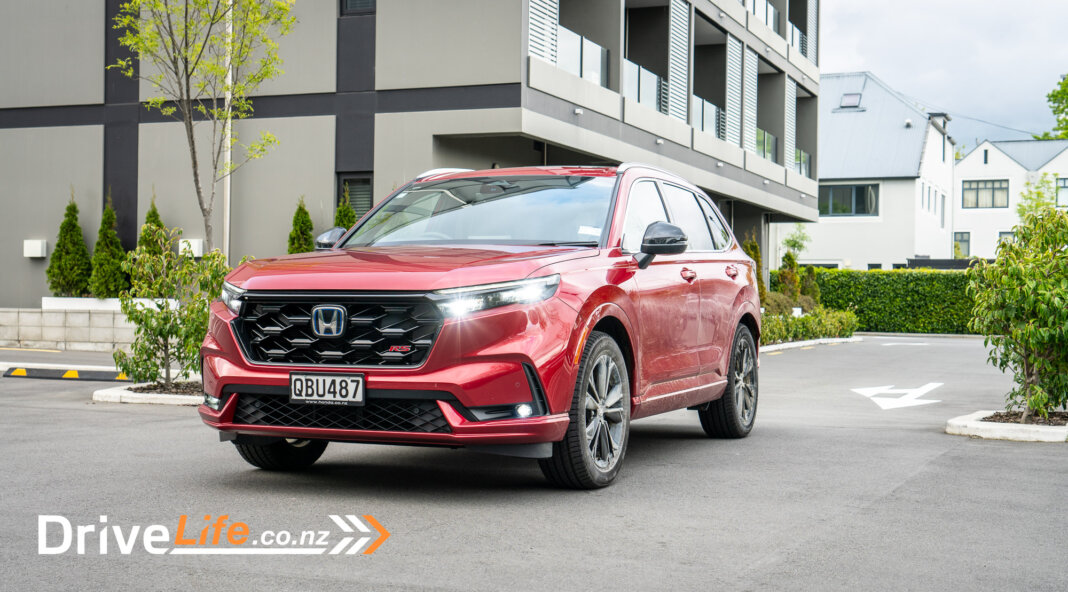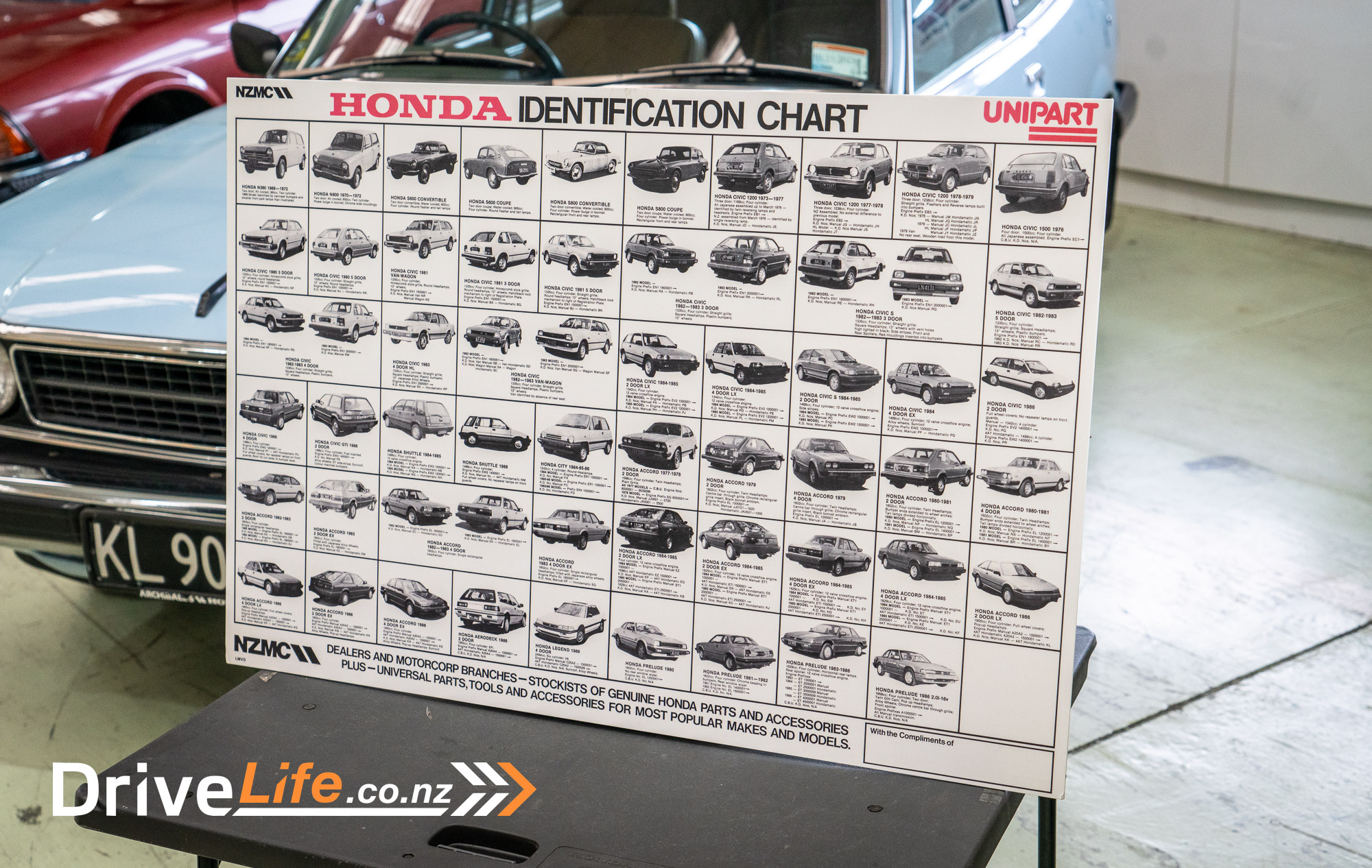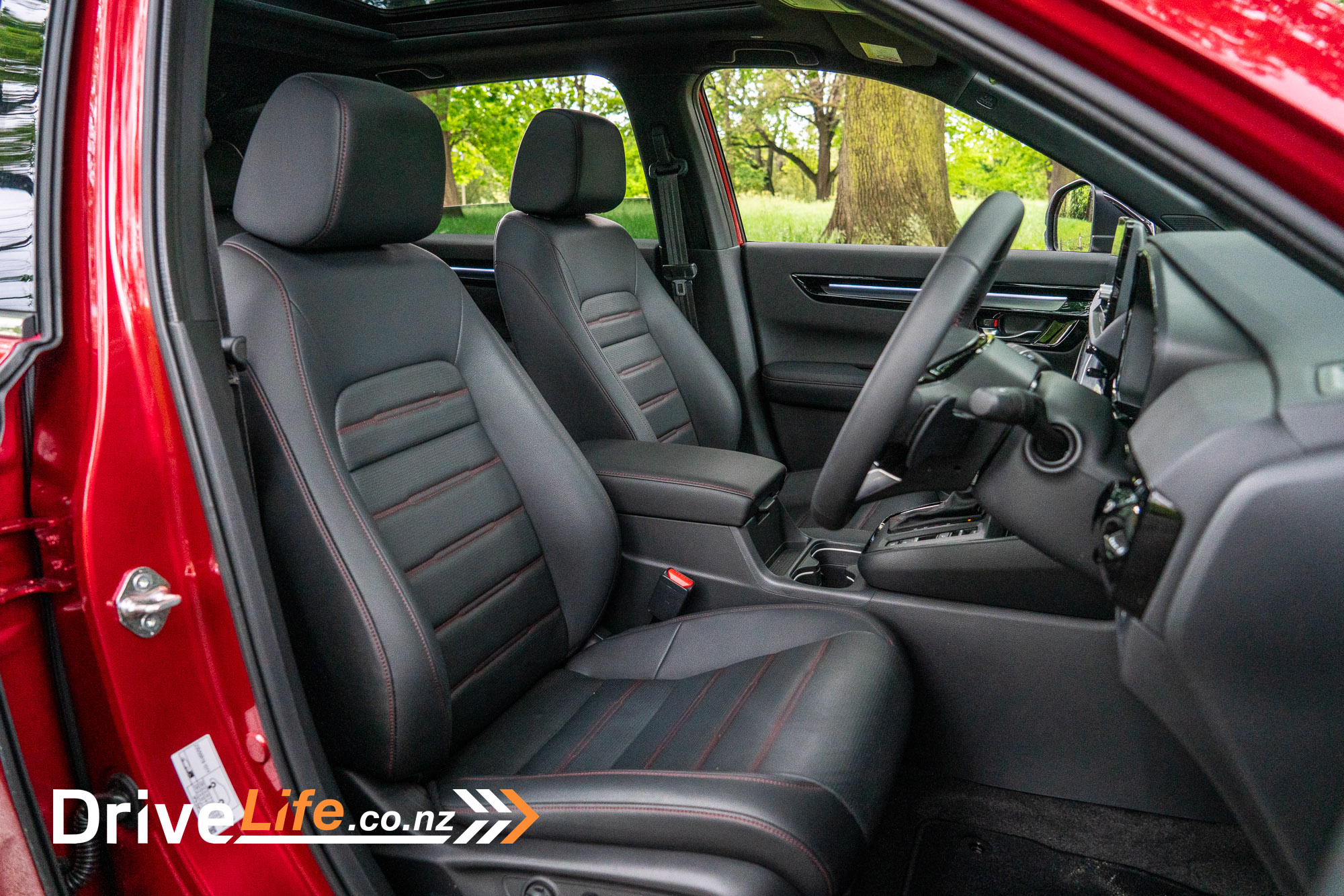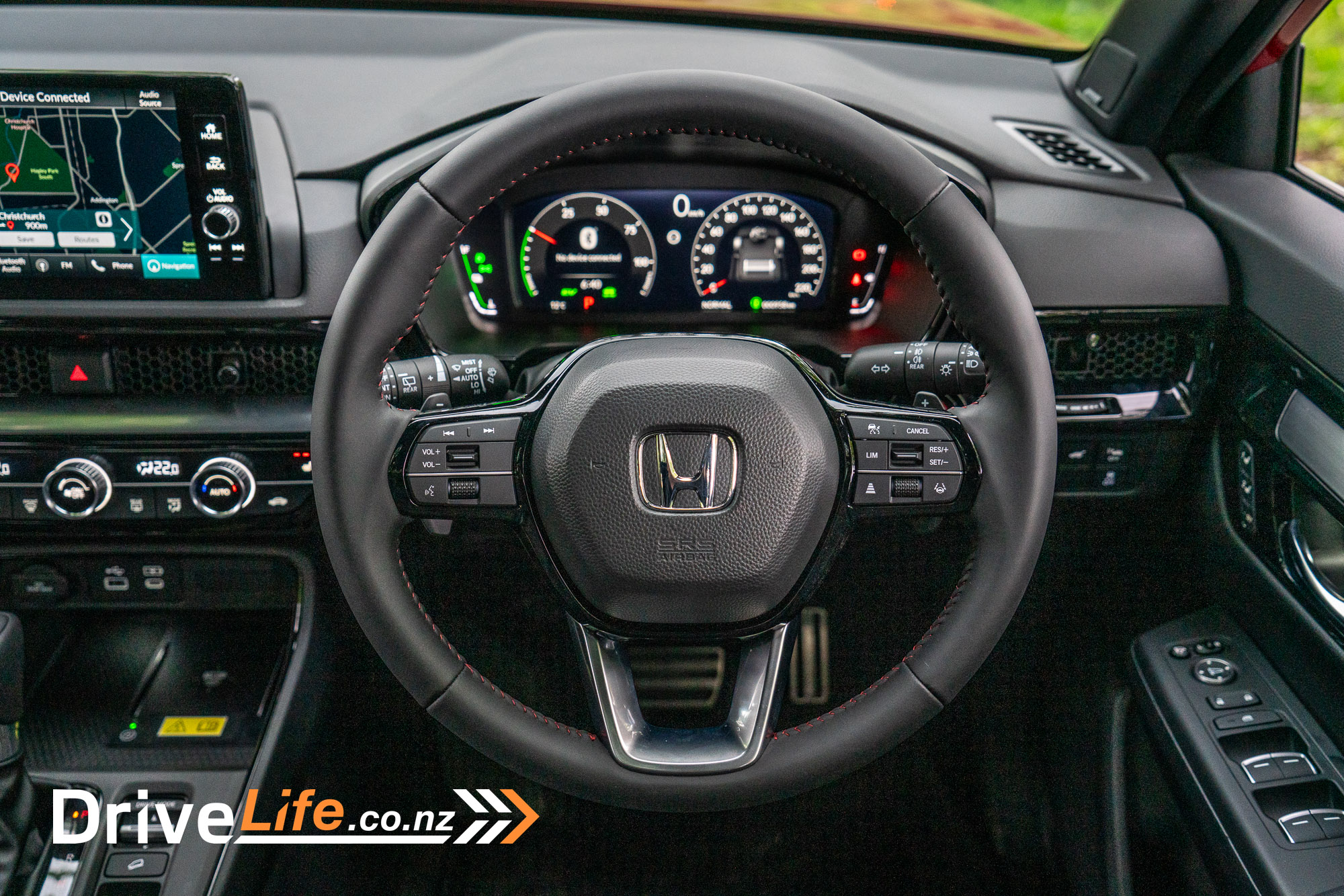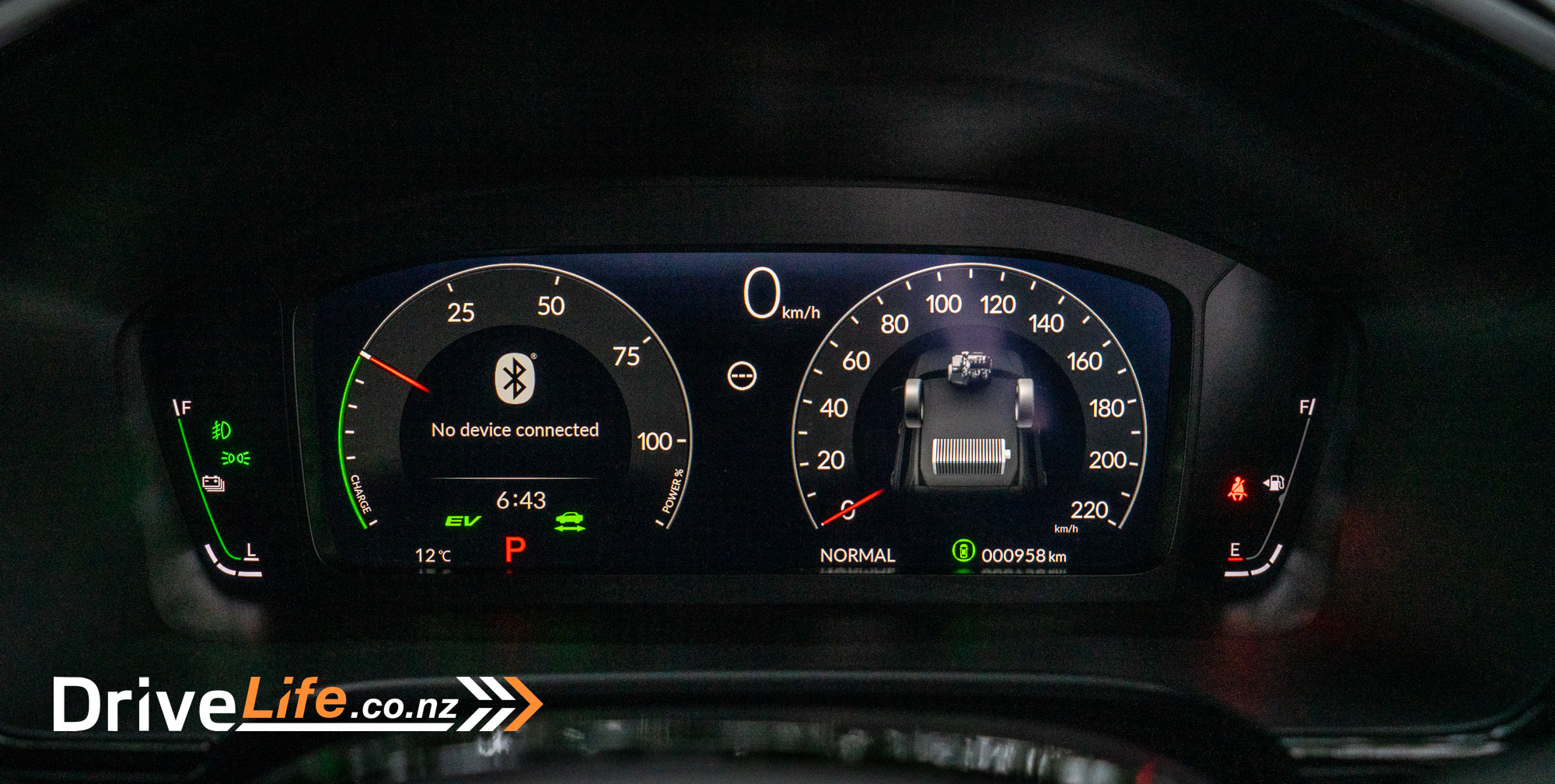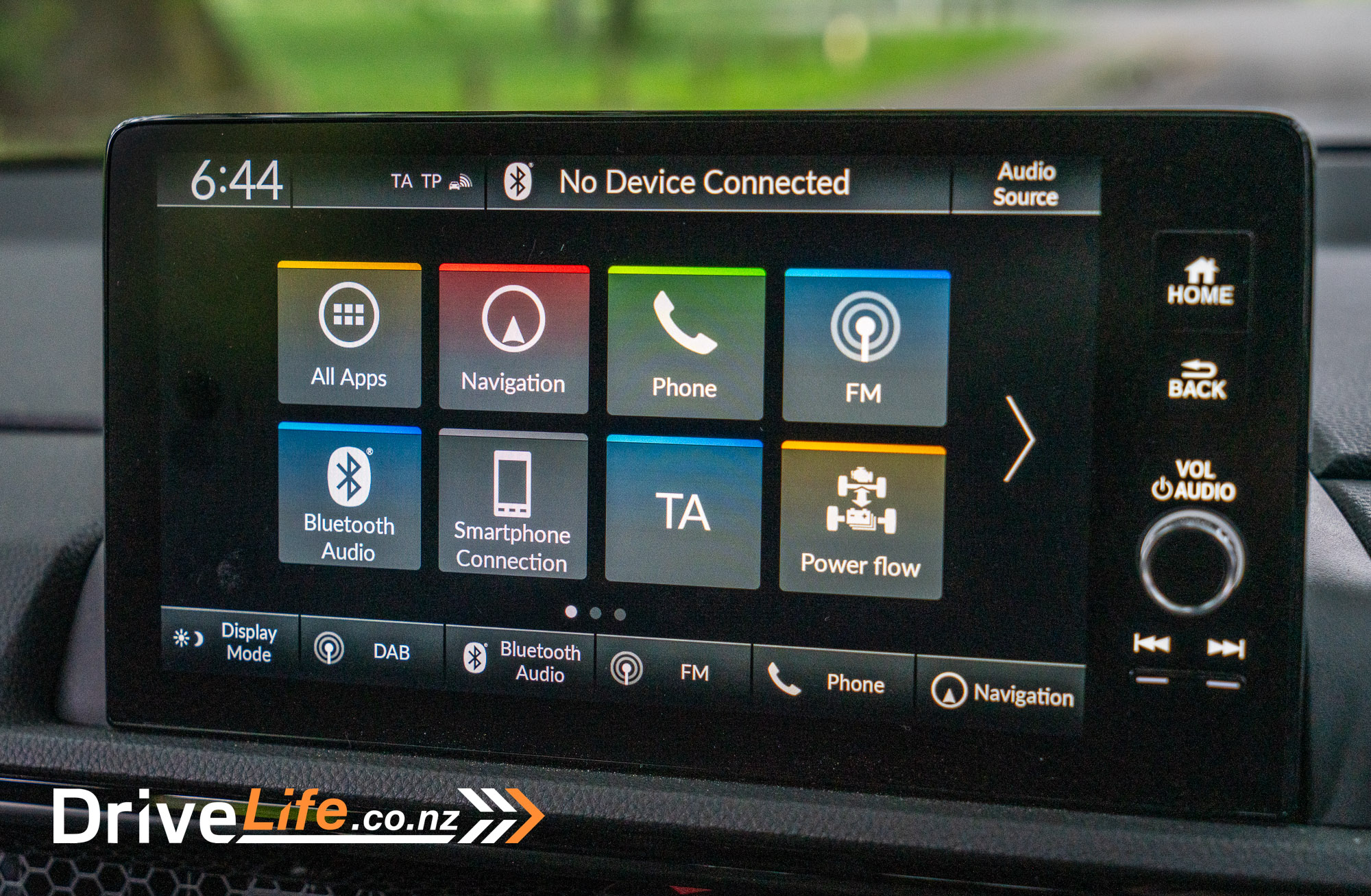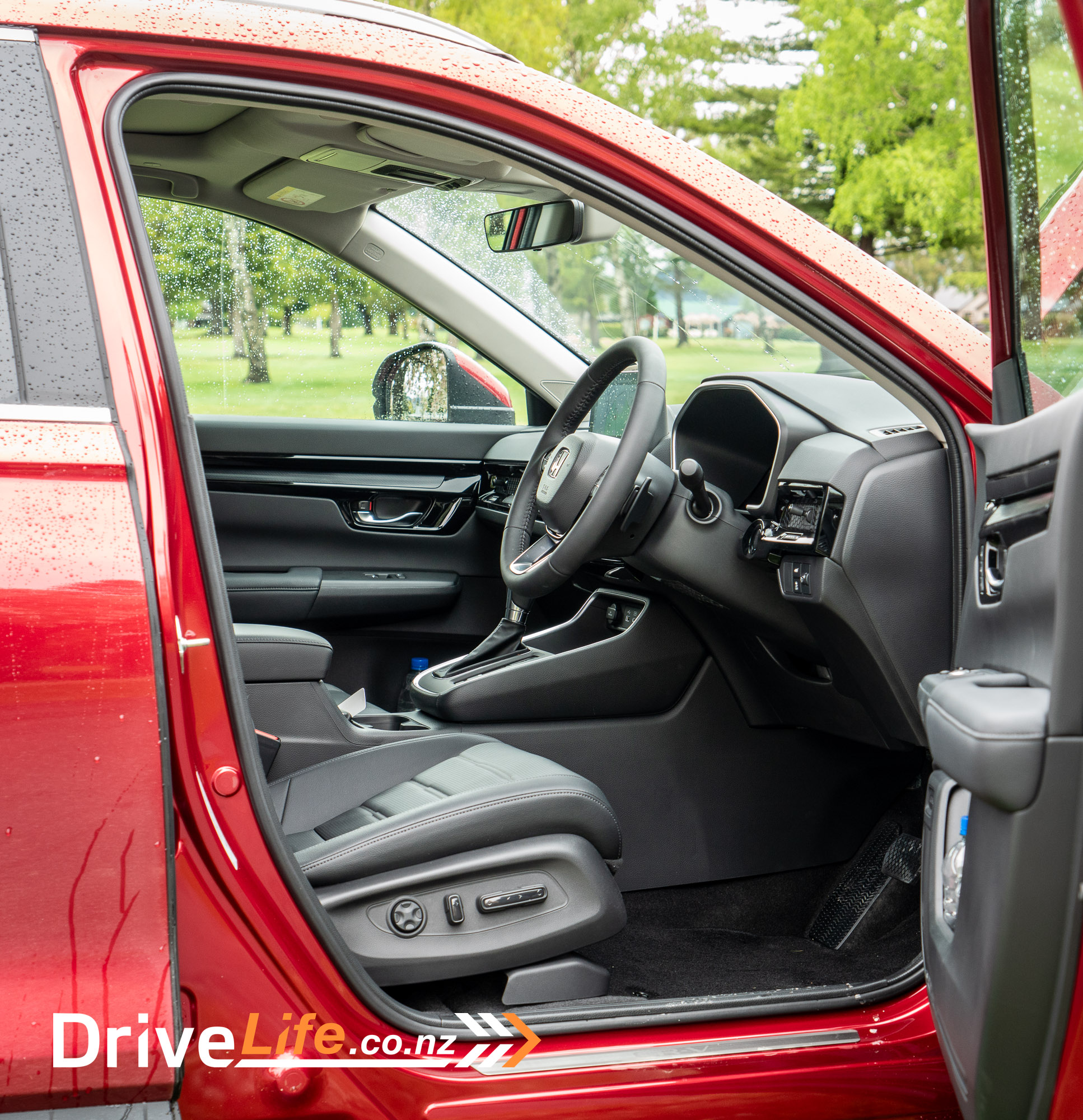The Honda CR-V is an icon of Honda’s range. Originally the acronym for Comfortable Runabout Vehicle, later dubbed the Compact Recreational Vehicle, the CR-V defined the crossover genre when it launched in 1995.
Through the years, the CR-V’s significance has only grown. It’s one of Honda’s most important cars, in arguably, one of the most important automotive segments. Globally, the CR-V is one of the best-selling crossover SUVs, which may surprise a few of us in New Zealand.
For some unknown reason, the CR-V has been a sales laggard in New Zealand compared to the likes of the Toyota RAV-4 and the Mitsubishi Outlander.
Honda New Zealand appear to be dead-set on changing those fortunes, and with the arrival of the 6th generation CR-V, they invited us to the South Island for an extended first drive. So, has the new-gen CR-V got the talent to knock its competitors off the mantle?
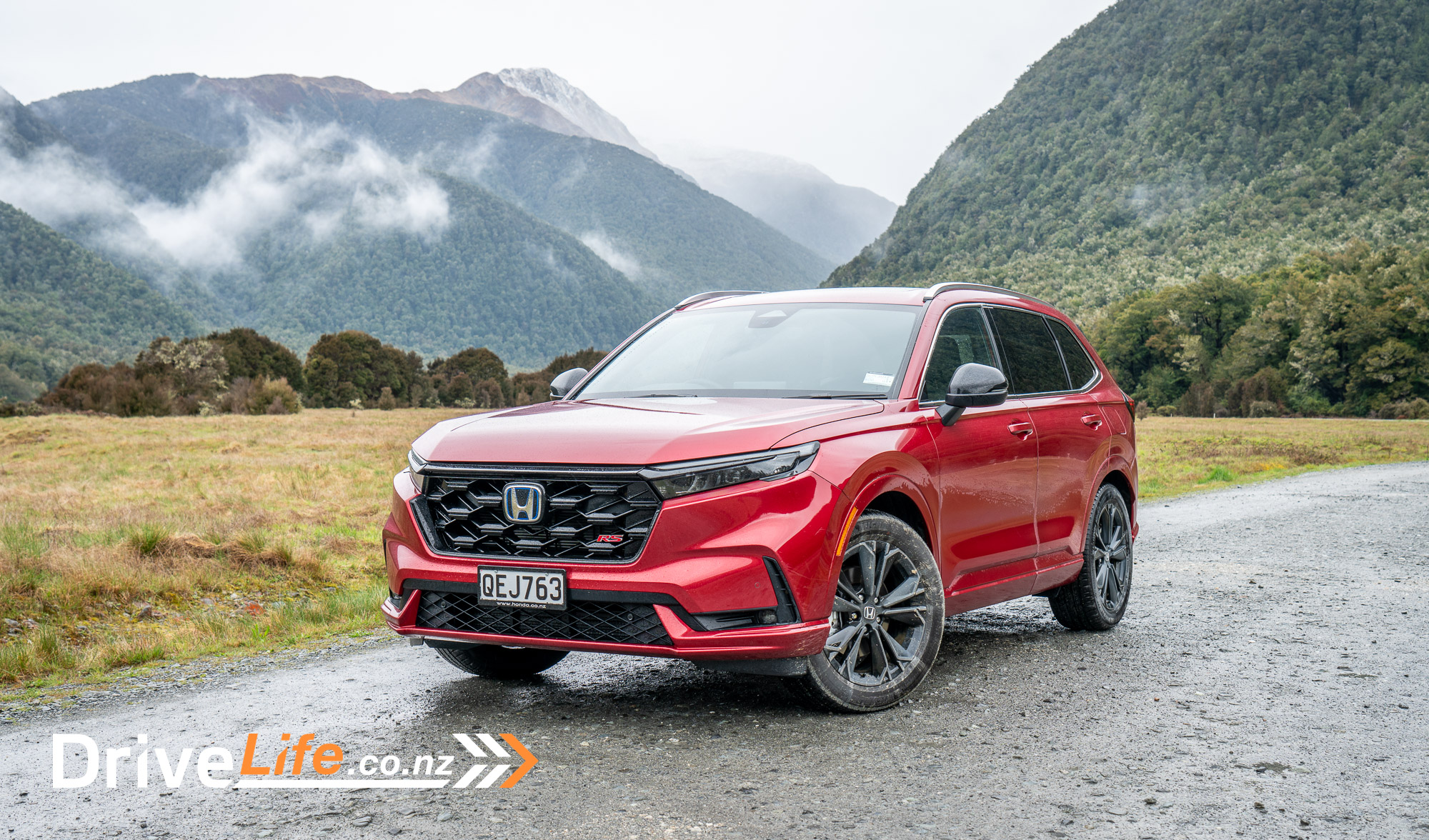
2023 Honda CR-V: The Range
The new 6th generation Honda CR-V lands in New Zealand with three models to choose from.
| Model | Powertrain | Price |
| Honda CR-V Sport AWD | Petrol | $53,000 |
| Honda CR-V Sport 7 | Petrol | $57,000 |
| Honda CR-V RS | Hybrid | $67,000 |
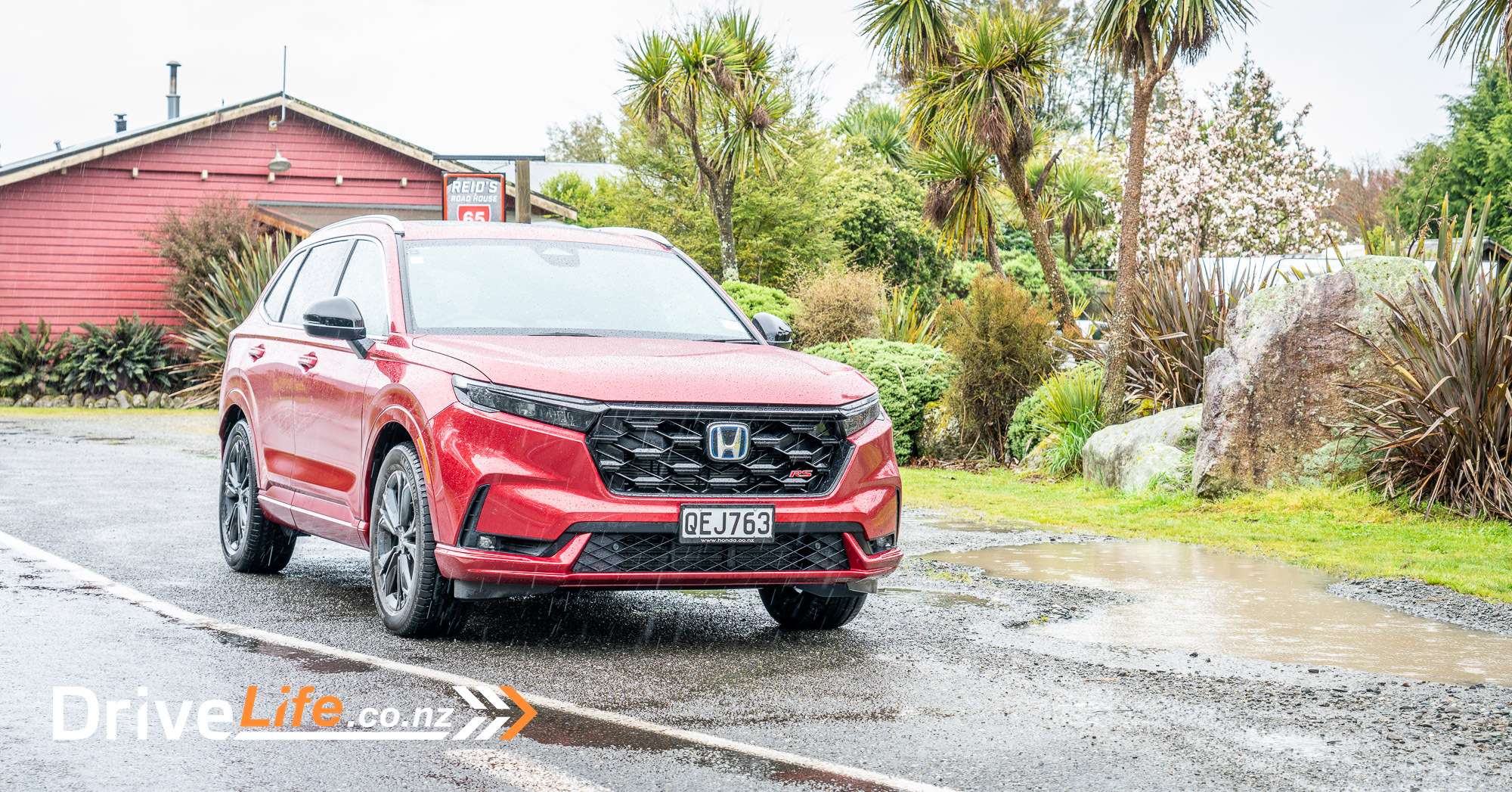
At the base of the range, there’s the CR-V Sport AWD, which is powered by a 1.5L turbocharged 4-cylinder V-TEC engine outputting 140kW of power and 240Nm of torque, driving all four wheels via a CVT automatic transmission. Claimed fuel economy is 8.1L/100kms.
Next in the range is the CR-V Sport 7, which as the name suggests, adds two additional seats. This is the only 7-seater in the CR-V range. The specs between this and the CR-V Sport AWD are nearly the same, except the CR-V Sport 7 adds a sunroof, rear climate control and a couple of extra cup holders. The 1.5L turbo engine and CVT transmission are carried over from CR-V Sport AWD, but the CR-V Sport 7 is only two-wheel drive. Claimed fuel economy of the CR-V is 8.2/100kms.
Should you have an extra $10,000 in your pocket, this will get you into the top-spec CR-V RS. It’s the only hybrid in the CR-V range, being powered by a 2.0L hybrid 4-cylinder outputting 135kW of power and 335 Nm of torque, driving all four wheels via an “e-CVT” automatic transmission. Honda’s hybrid system is somewhat different in that the electric motor does most of the driving, while the petrol engine serves as a generator. It sounds complicated, but what isn’t complicated is the fuel economy figure, which is a claimed 6.4L/100kms. Impressive, for a mid-size SUV.
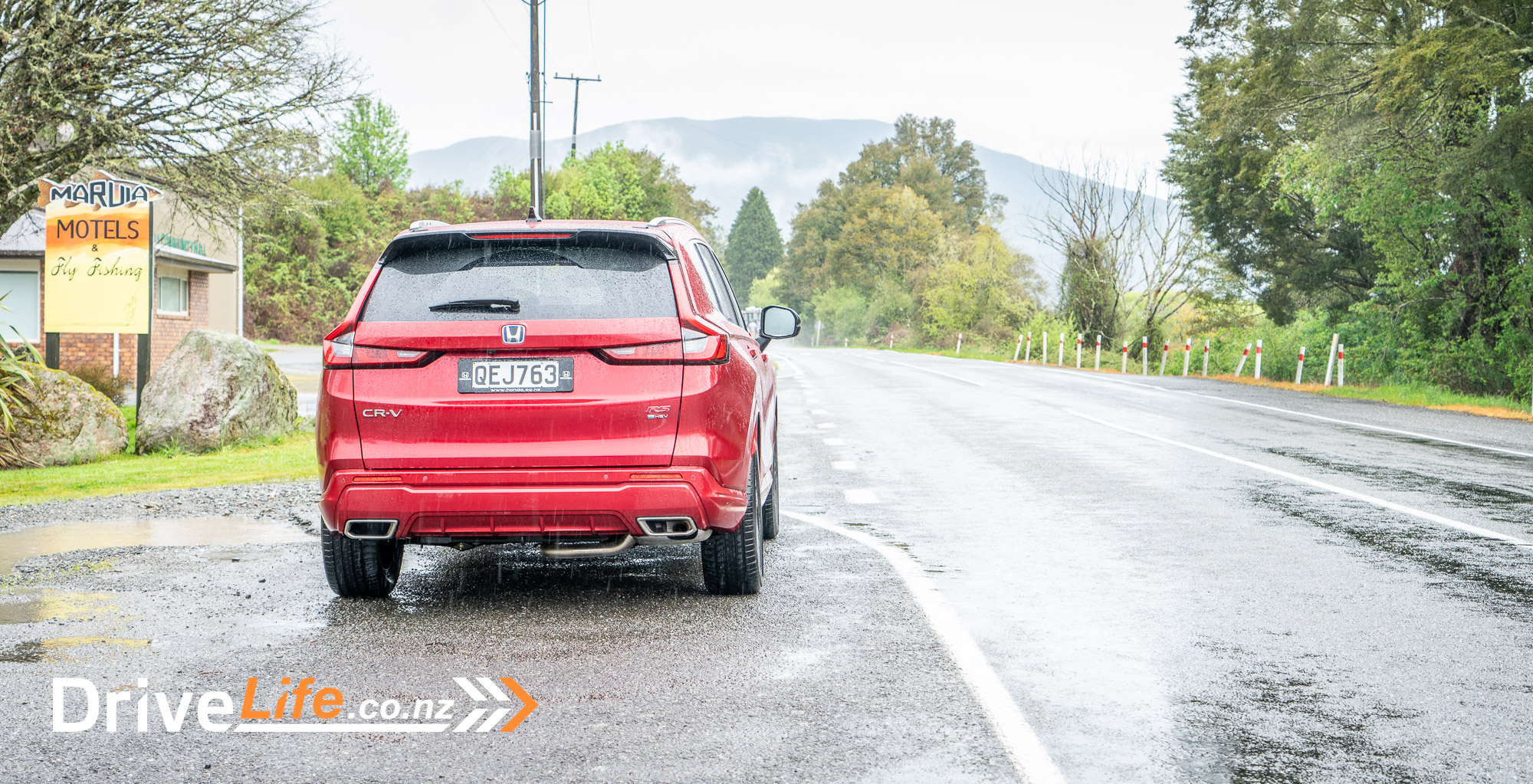
2023 Honda CR-V: An Introduction to the new CR-V
Upon arriving in Nelson, Honda New Zealand led us away for a brief introduction to the new CR-V at their distribution centre. This is where they quality control many of the new Hondas arriving in New Zealand.
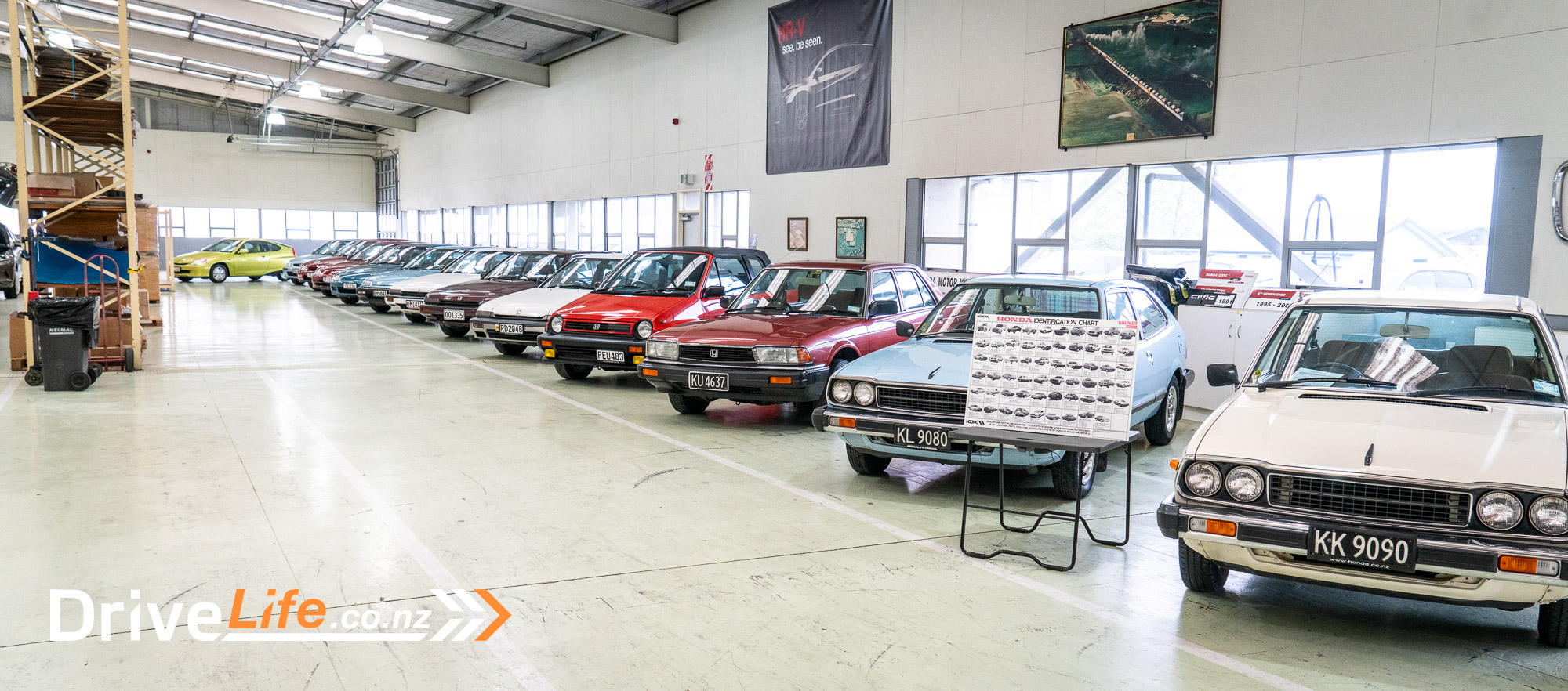
We’d hinted earlier that the CRV is an important car for Honda New Zealand. In fact, it’s their second biggest customer database behind the Honda Jazz.
While New Zealand sales of the CR-V have lagged behind competitors in recent years, Honda New Zealand claims they’ve already managed to shift 110 new CR-V’s in the first hour of their launch, and they’re tracking on-target to clear 800 CR-Vs over the next 6 months.
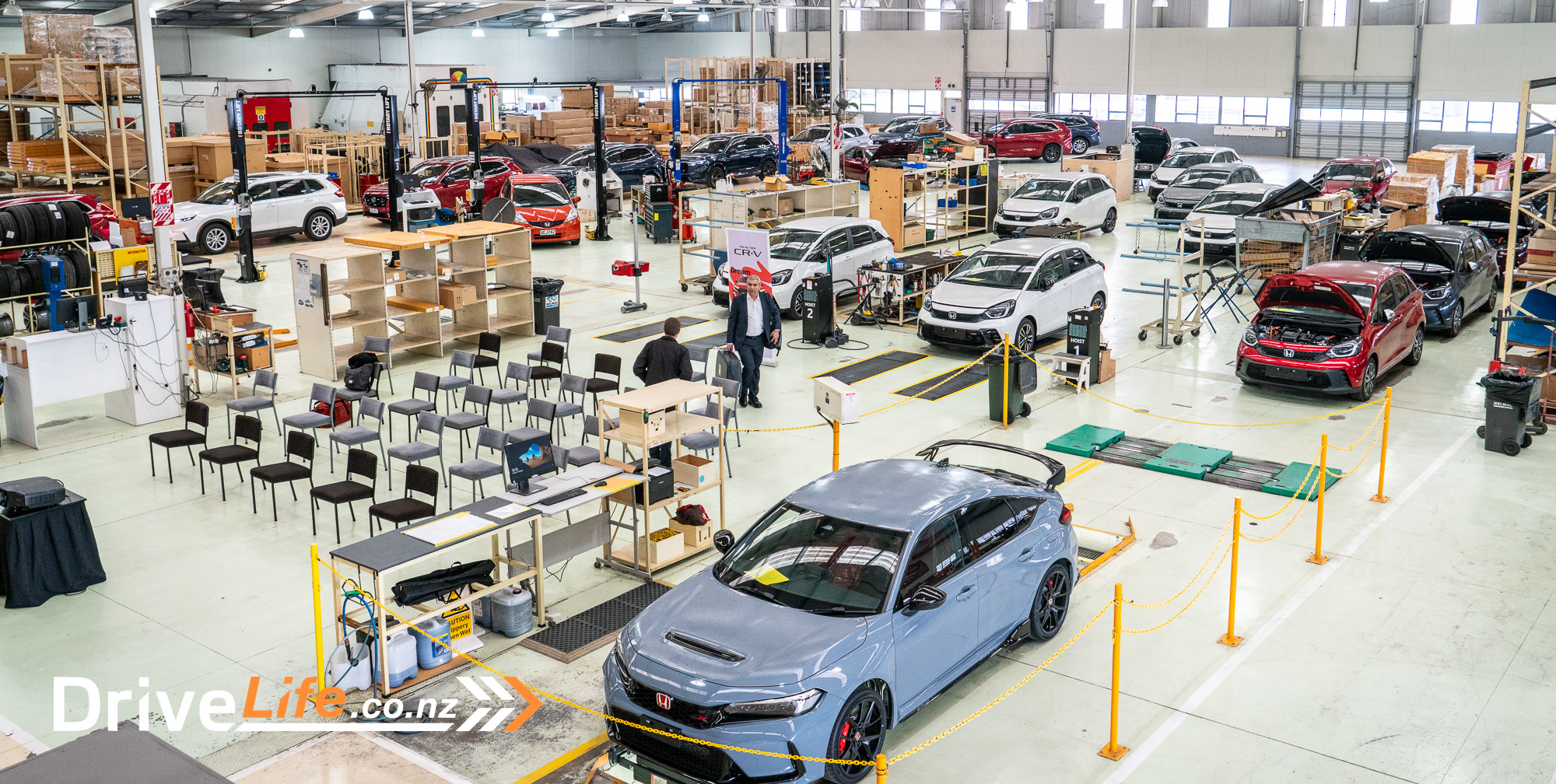
Sure, that’s not exactly RAV-4 or Outlander numbers, but Honda New Zealand are anticipating that many of their initial sales will be from repeat buyers. If those numbers can be kept up with new buyers, they’ll have secured a healthy slice of New Zealand’s crossover market pie.
Anyway, that’s the financial stuff covered. Now, the car.
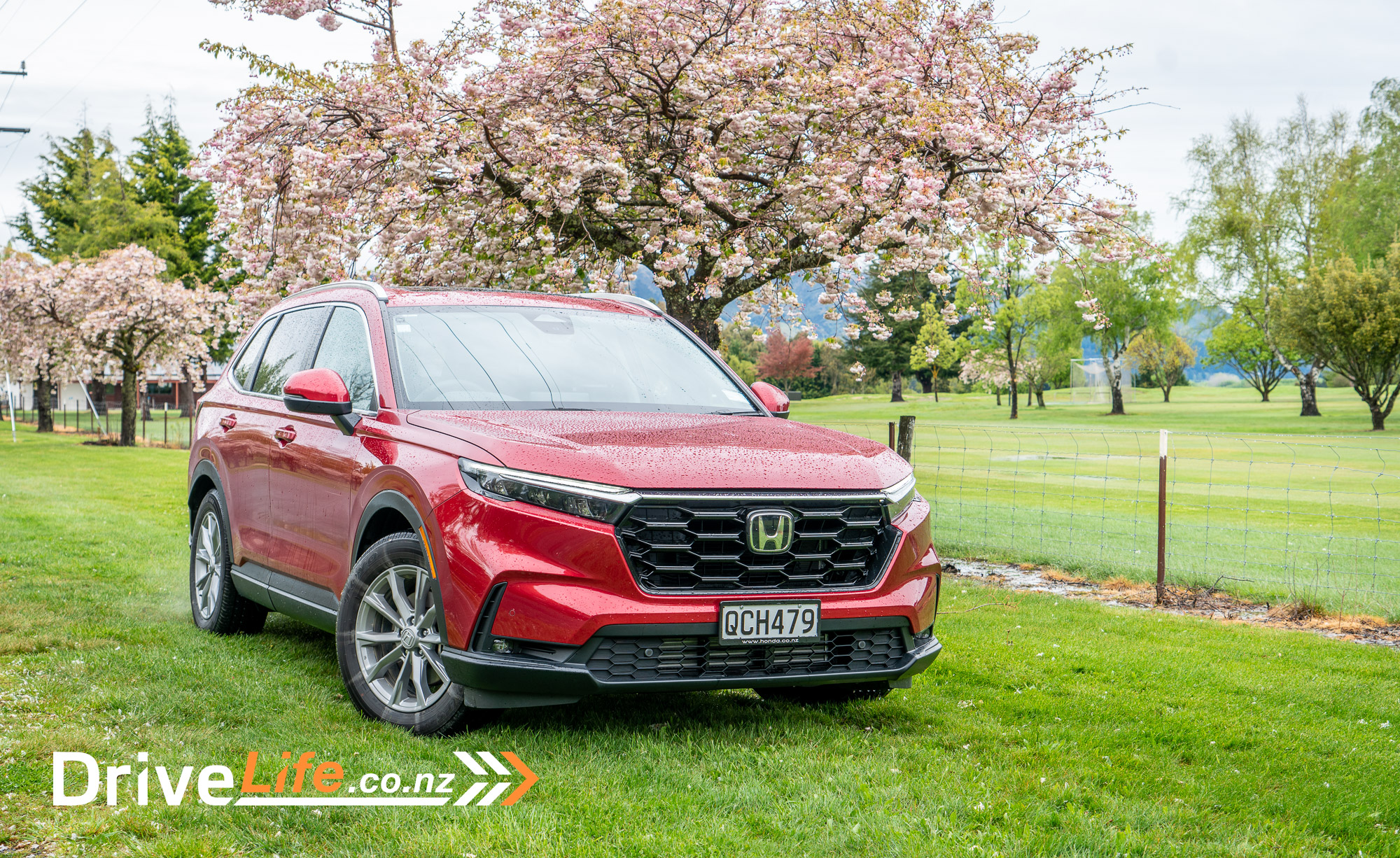
The 6th generation CR-V is a ground-up redesign, based on Honda’s newest global “HA” platform architecture, which is the same platform used to create the Civic and the ZR-V.
From the outside, the new CR-V is already off to a good start. The new-gen CR-V has boxier elements, crisper lines and premium details. It’s longer and wider than before, with modest increases of 80mm to the body, 10mm to the width and 40mm to the wheelbase. The new architecture has also made the body structure 15% more rigid allowing Honda’s engineers to tweak the handling, but more on this later.
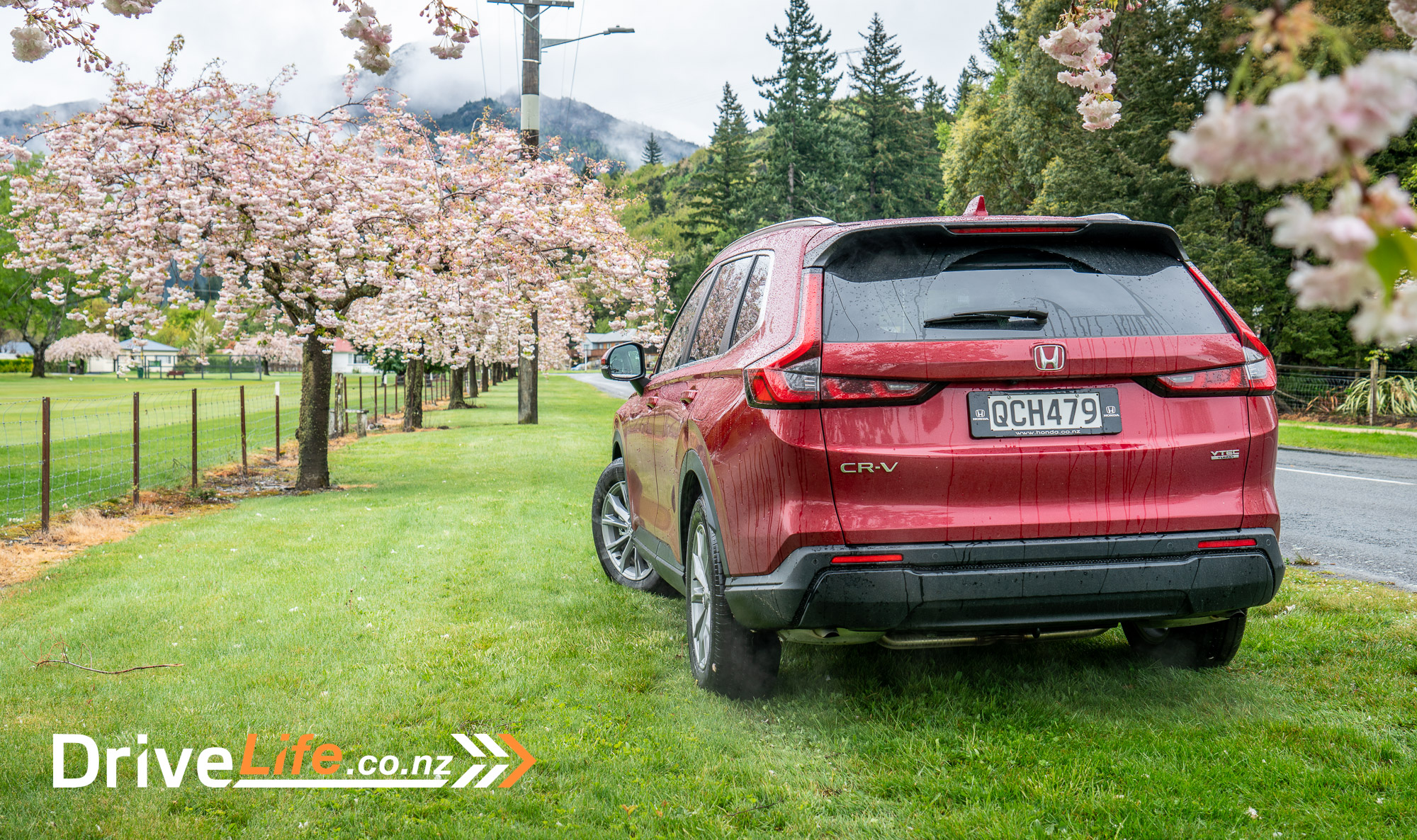
Altogether, the design has a certain ruggedness, while possessing an aura of elegance. It looks premium, and if anything, a tad European. However, that might be influenced by the rear end and tail-light design, which is more-than-slightly reminiscent of a Volvo XC-60.
Whatever your view, this CR-V has the most road presence of any before it. To my eyes, it’s better looking than the bulbous, somewhat zany design of its predecessor.
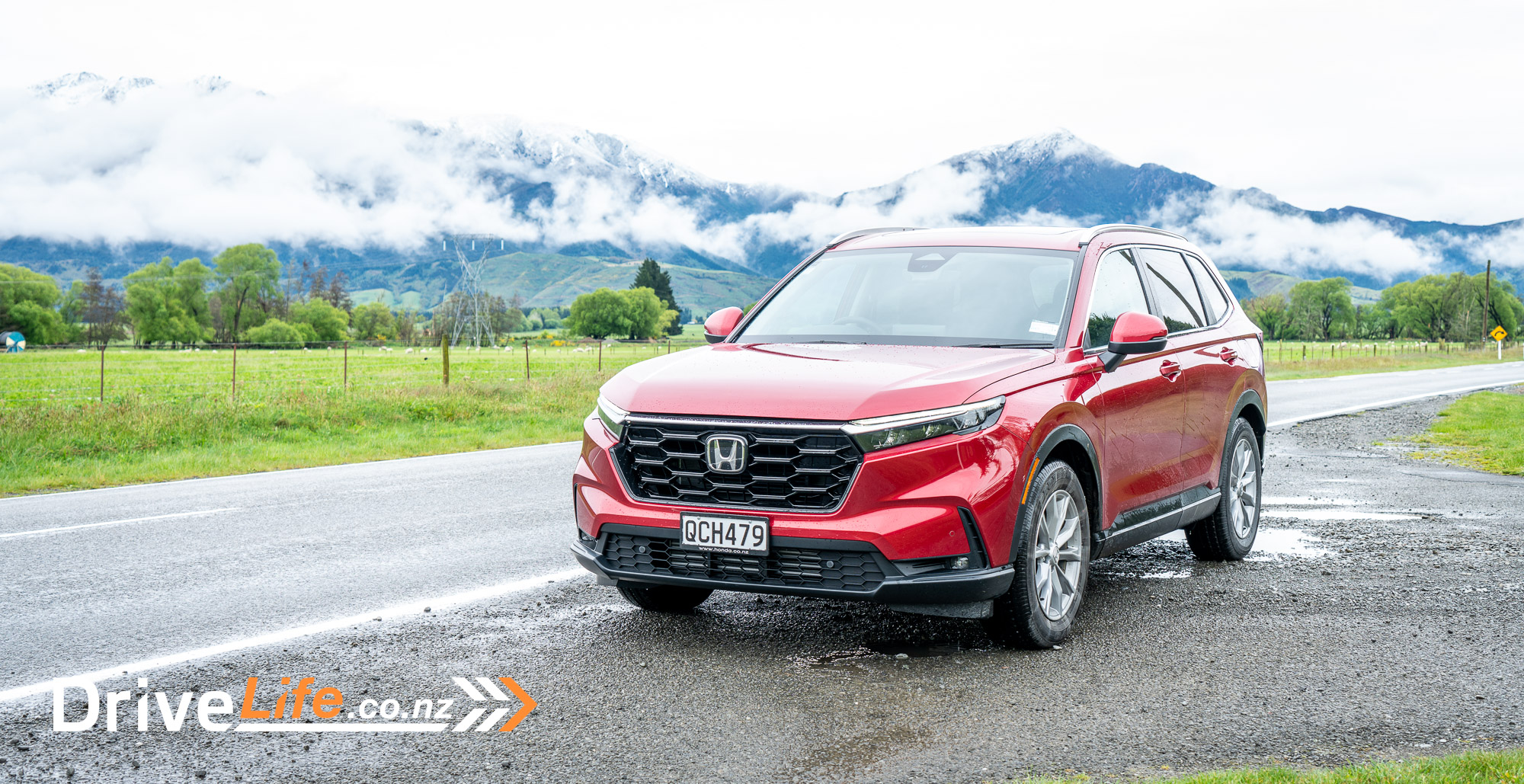
Inside, the new CR-V has been completely refreshed. It’ll look familiar to the Civic and ZR-V from the front seats, given that it now incorporates Honda’s new interior format. Essentially, the dash design (with its continuous honeycomb grille), the climate control stack, the instrument cluster(s) and the infotainment unit are all carried over from other modern Hondas.
There’s something to be said for a loss of character in taking a standardised approach, but it does allow Honda to invest in optimising one format. And frankly, I reckon they’ve nailed it.
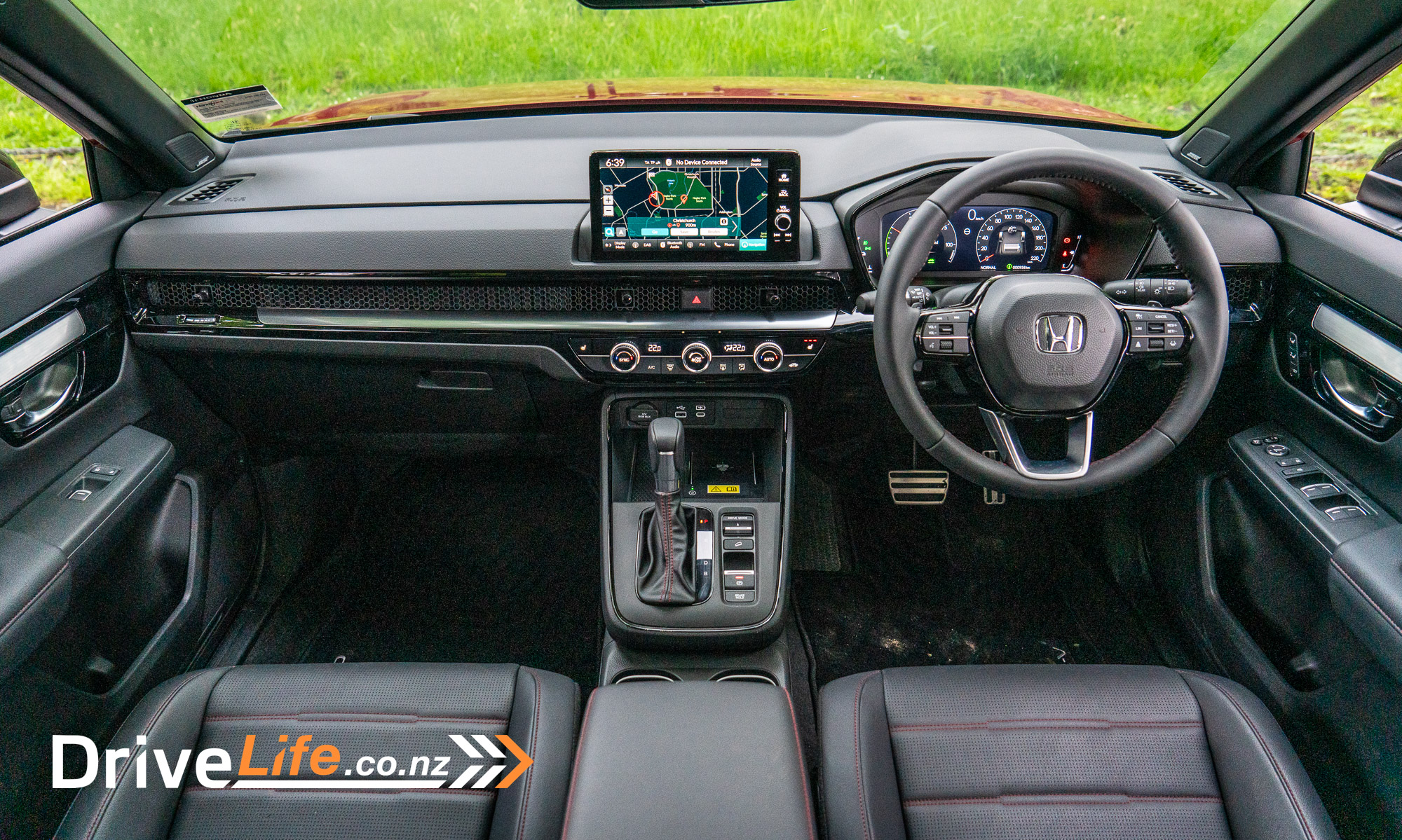
The CR-V’s interior is modern, yet simple and usable. Everything that should be a knob, is a knob, and everything that should be a button, is a button. No unnecessary screens or any stupid haptics in here.
It is a very blue jeans approach to interior design – solid, reliable and often the preference for most occasions. Like an old pair of Levi’s, the CR-V’s build quality is brilliant, and the textures inside the cabin are high quality. Seriously, the interior quality could put some European stuff on notice.
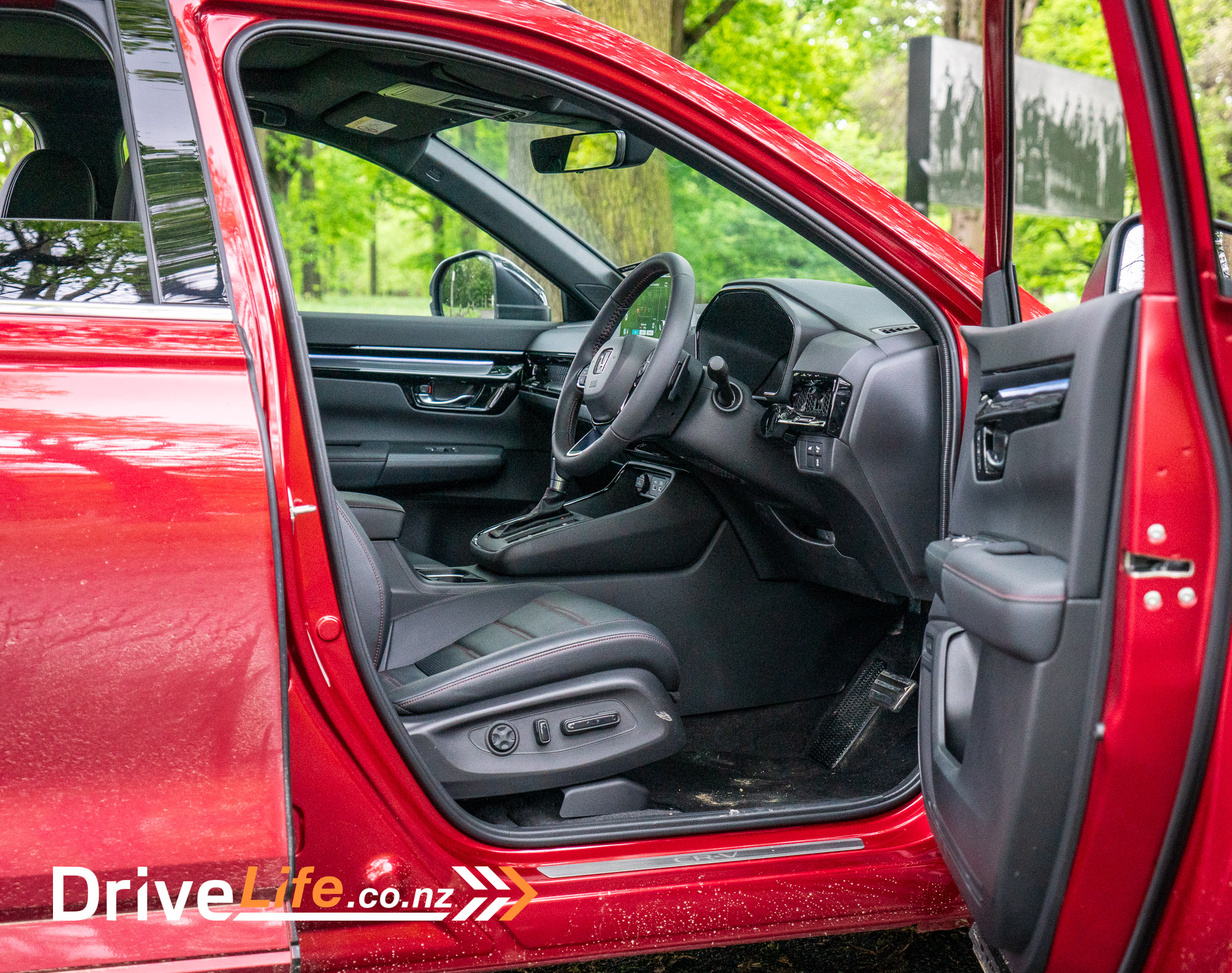
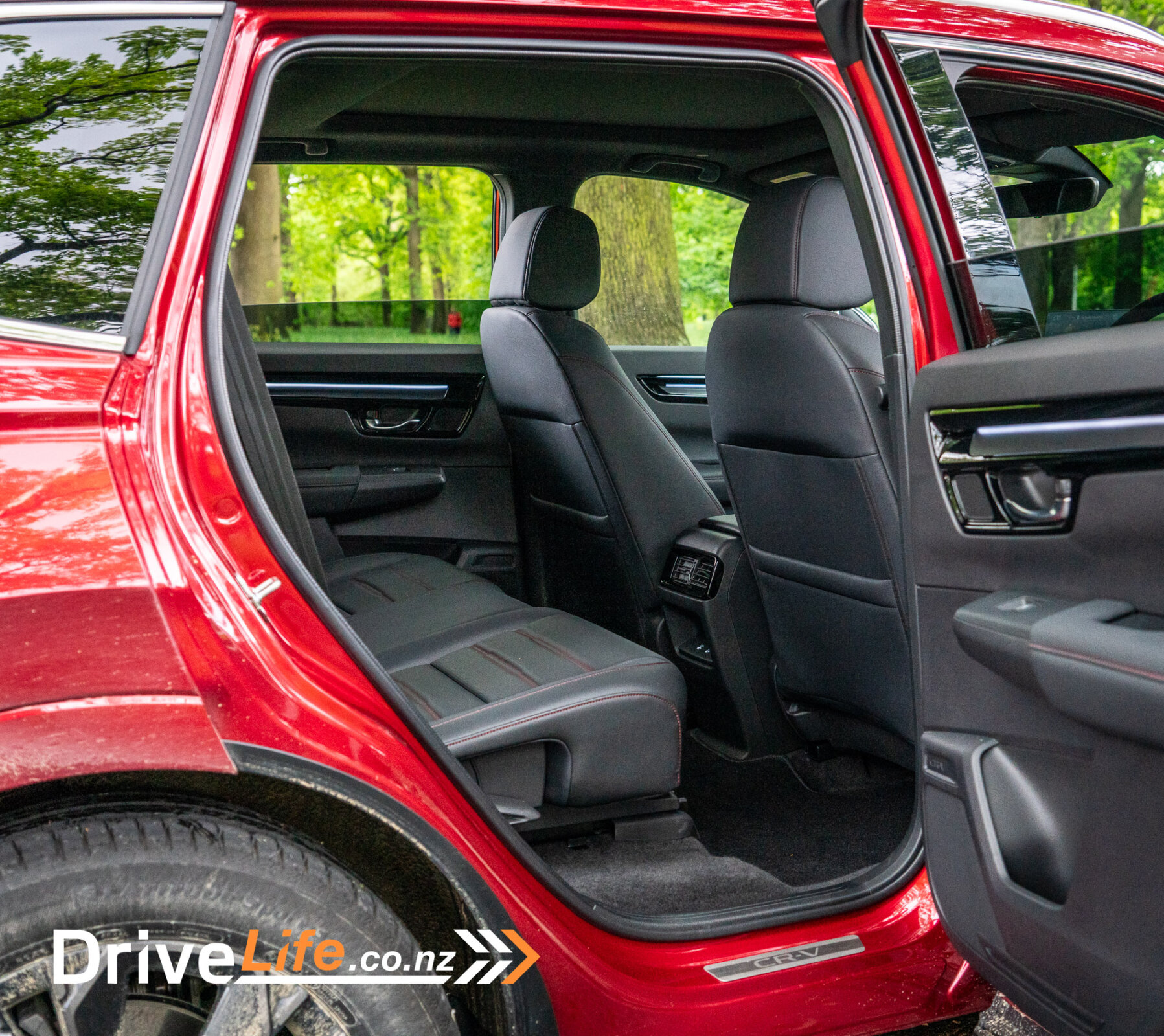
On the tech front, the new CR-V range has plenty of tech bells and whistles. All CR-V models feature “Honda Sensing Technology”, “Active Safety” and “Honda Connect”. It’s a fancy way of saying that CR-V is equipped to the nines on the safety tech front.
In the centre, there’s a 9’’ infotainment which has Apple CarPlay and Android Auto as standard across the range. The interface is tile-based, with crisp resolution and decent responsiveness. It’s easy for anyone of any tech aptitude to use. The driver’s instrument cluster is half digital, with a 7’’ multi-info display, next to a fixed tachometer. Upgrading to the CR-V RS gets you a 10.3’’ full digital instrument cluster.
Although the modern CR-V’s ace has always been space. As practicality goes, the CR-V is essentially a giant bread bin on wheels. It has wide openings and loads of interior room. Even the in-cabin storage is huge. I could nearly lose my arm inside the centre console.
In the front, there’s plenty of configurability in the seats across all-trim levels. Taller folk shouldn’t have any trouble finding a comfortable driving position. Speaking of tall, the CR-V has always been class-leading in terms of rear passenger space. I mean, it’s basically a limo back here.
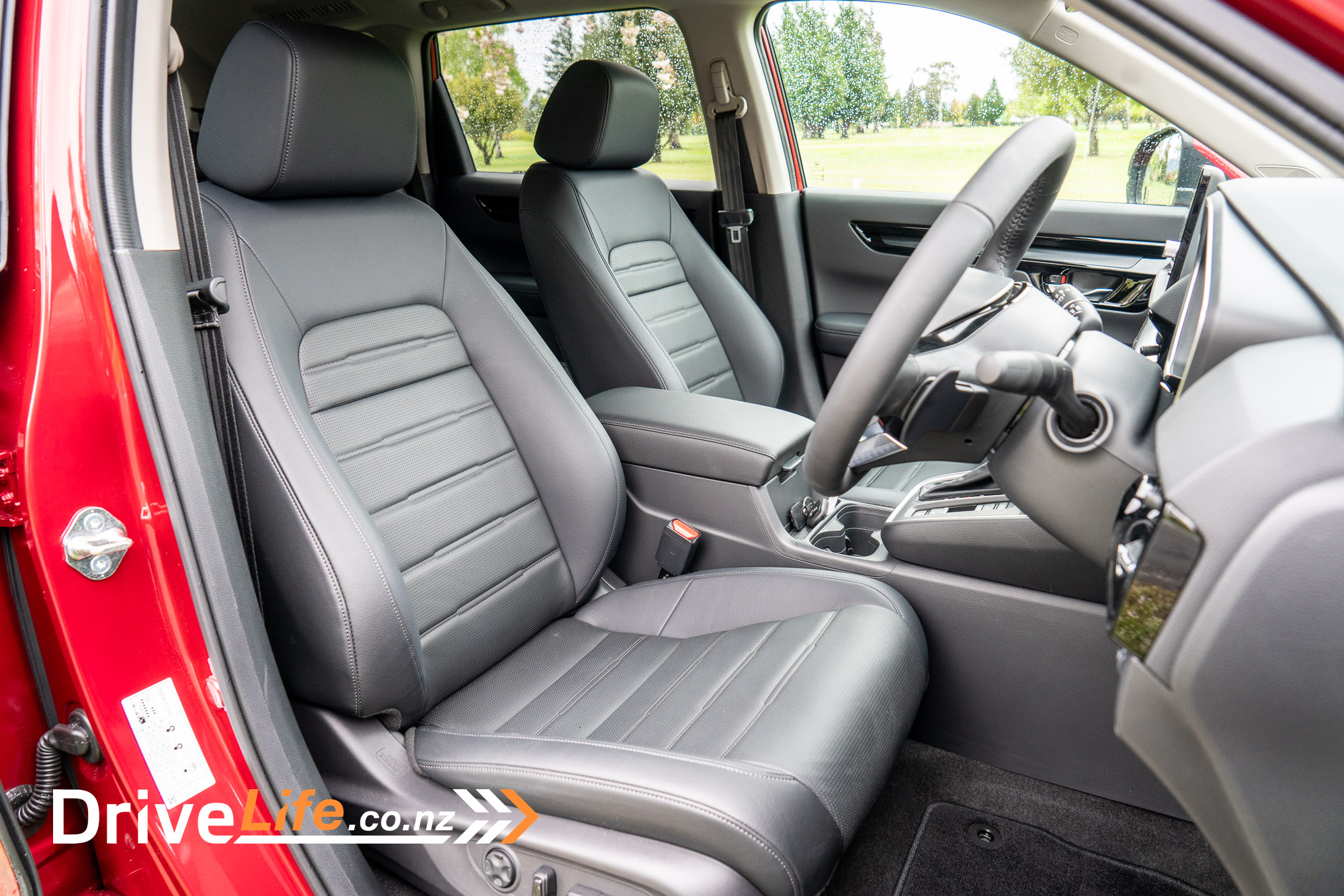
Unfortunately, the new CR-V does sacrifice some headroom due to a higher seat base. Although, that’s not going to affect most adults. The rear seats also recline, and there’s some USB-C ports in the back to keep devices charged and make journeys quieter, if ya follow me.
The bigger loss for this CR-V was Honda’s decision to ditch their “magic” seats from this generation. Though, this decision was apparently due to platform design constraints, rather than any outright cost saving measures. The rear seats do still fold into the floor, for a flat extended cargo space.
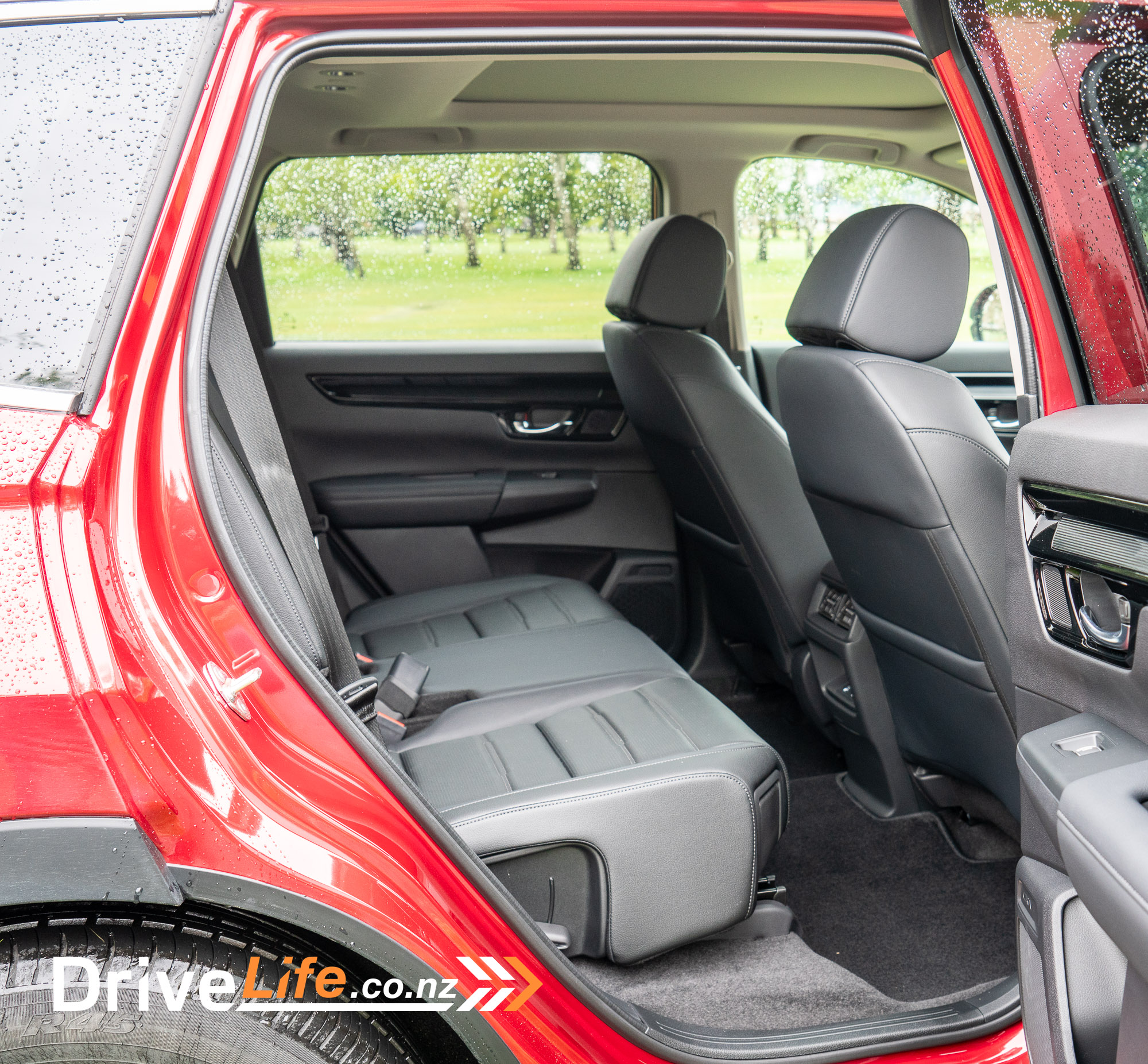
Being true to form, there’s acres of cargo space in the new CR-V models. It varies by model, ranging from 581 litres at the lowest end (RS, with second row in place) and expanding to a huge 1671 litres at the highest (Sport AWD, second row folded down).
For context, cargo space in the RAV-4 ranges from 542 litres – 580 litres (second row in place). So, that’s score one to the CR-V.
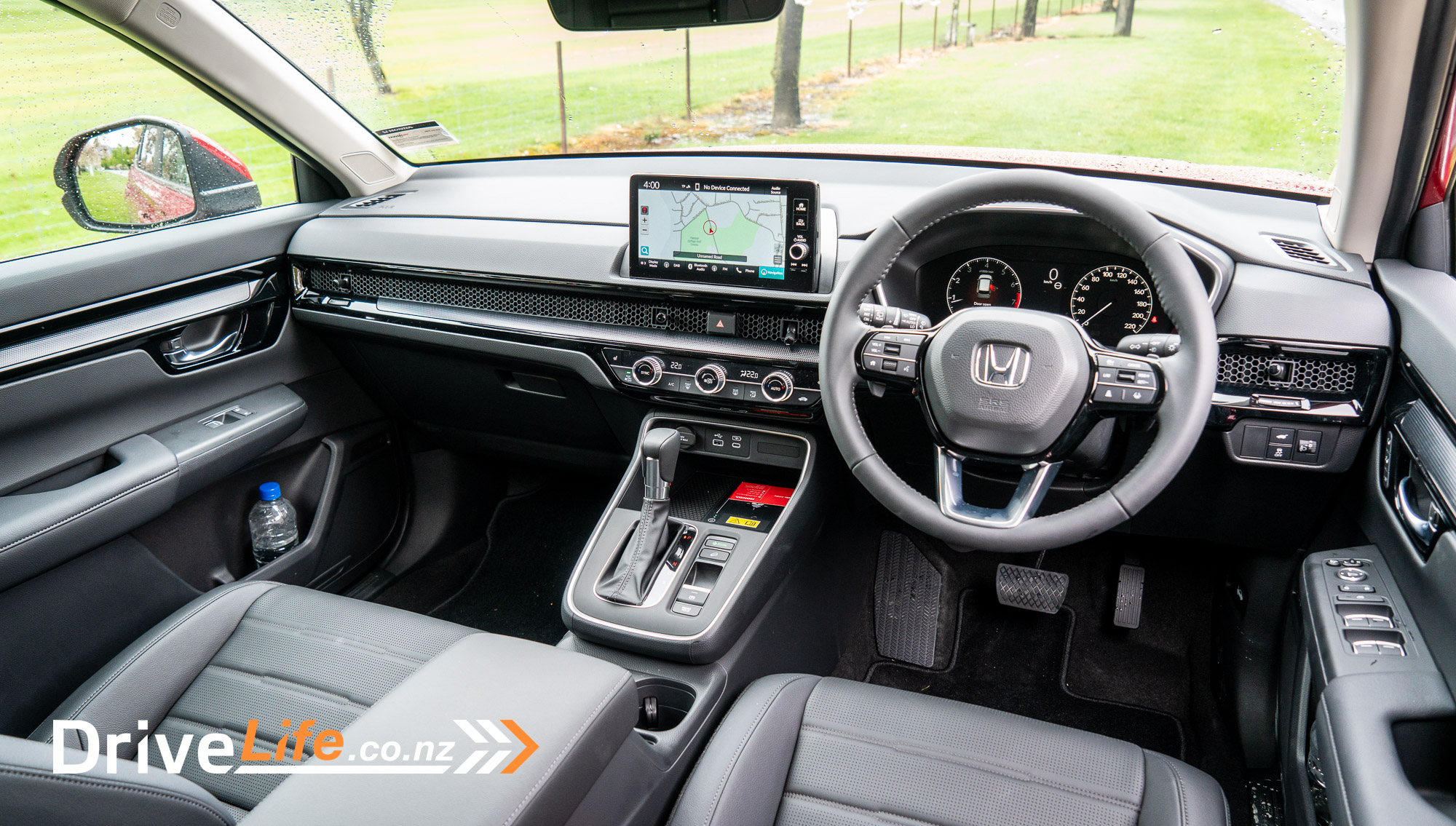
2023 Honda CR-V: The Drive – CR-V RS
Introductions done, it was time to head out on an inland journey from Nelson to Christchurch. We’d start down SH 6, joining SH 65 past Murchison, through Lewis Pass to Hamner Springs.
For the first leg of the journey, we were handed the keys to the CR-V RS. The top-of-the-totem pole CR-V RS has all the trimmings – a full digital dash cluster, a Bose audio system, adaptive headlights, extra sound deadening and more.
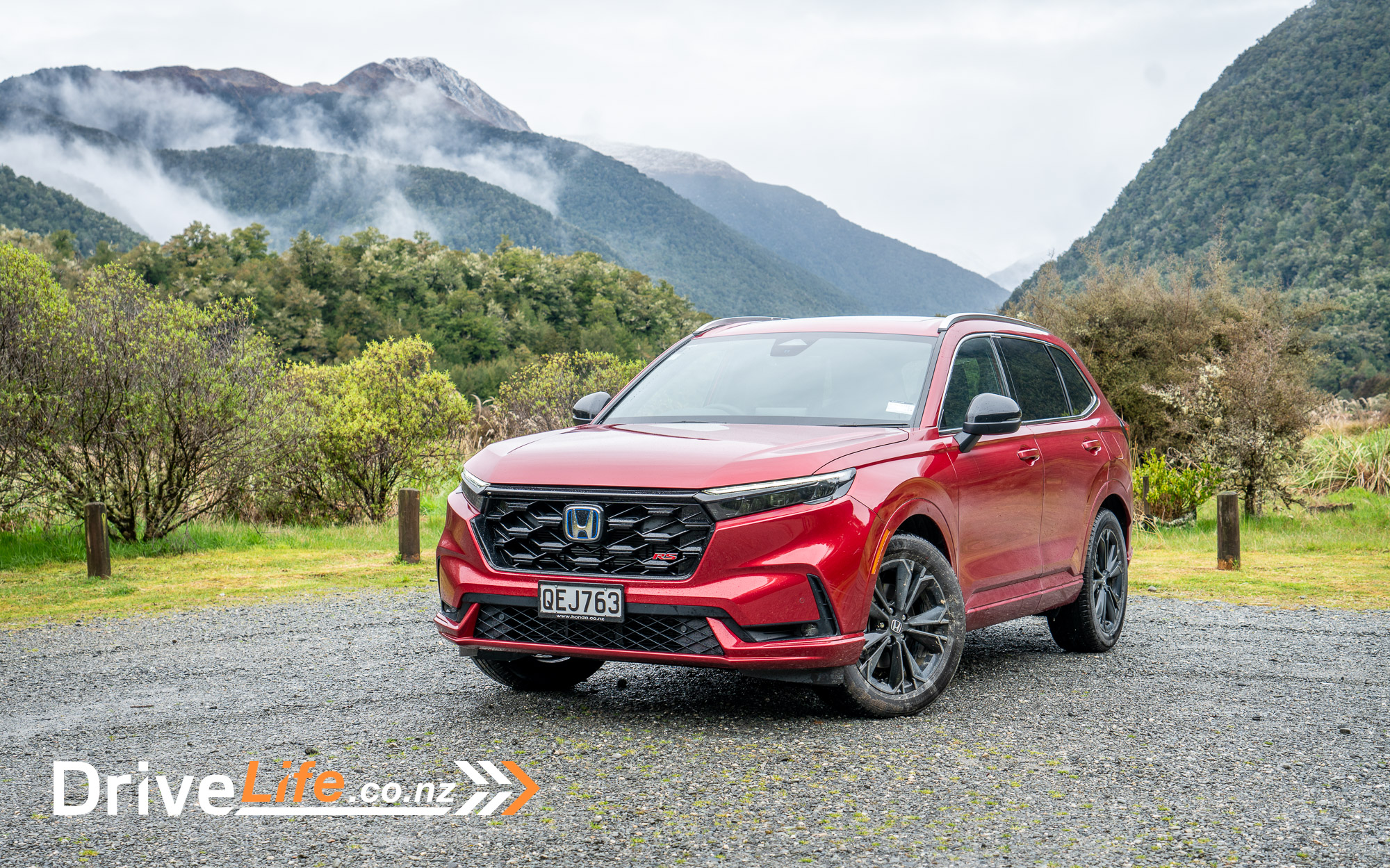
Although, the highlight of the CR-V RS is Honda’s 2.0-litre e:HEV Hybrid powertrain. The e:HEV powertrain is Honda’s newest approach for its hybrids, utilising a traditional combustion engine, a generator, two electric motors, and a battery. Essentially, the electric motors perform most of the driving, while the petrol engine works to power a generator, which charges the battery. When up to higher speeds (and occasionally at low speeds), a clutch engages which switches the driving to the petrol engine. Pretty clever stuff.
The gearbox is even cleverer. Honda calls it their “e-CVT”, but it’s not really a CVT in the conventional sense. That’s because it’s a combination of the electric motors and a series of clutches in charge of the power flows, meaning this e-CVT is more like a direct-drive unit as opposed to a belt-driven CVT. Confused? Yeah, I don’t blame you.
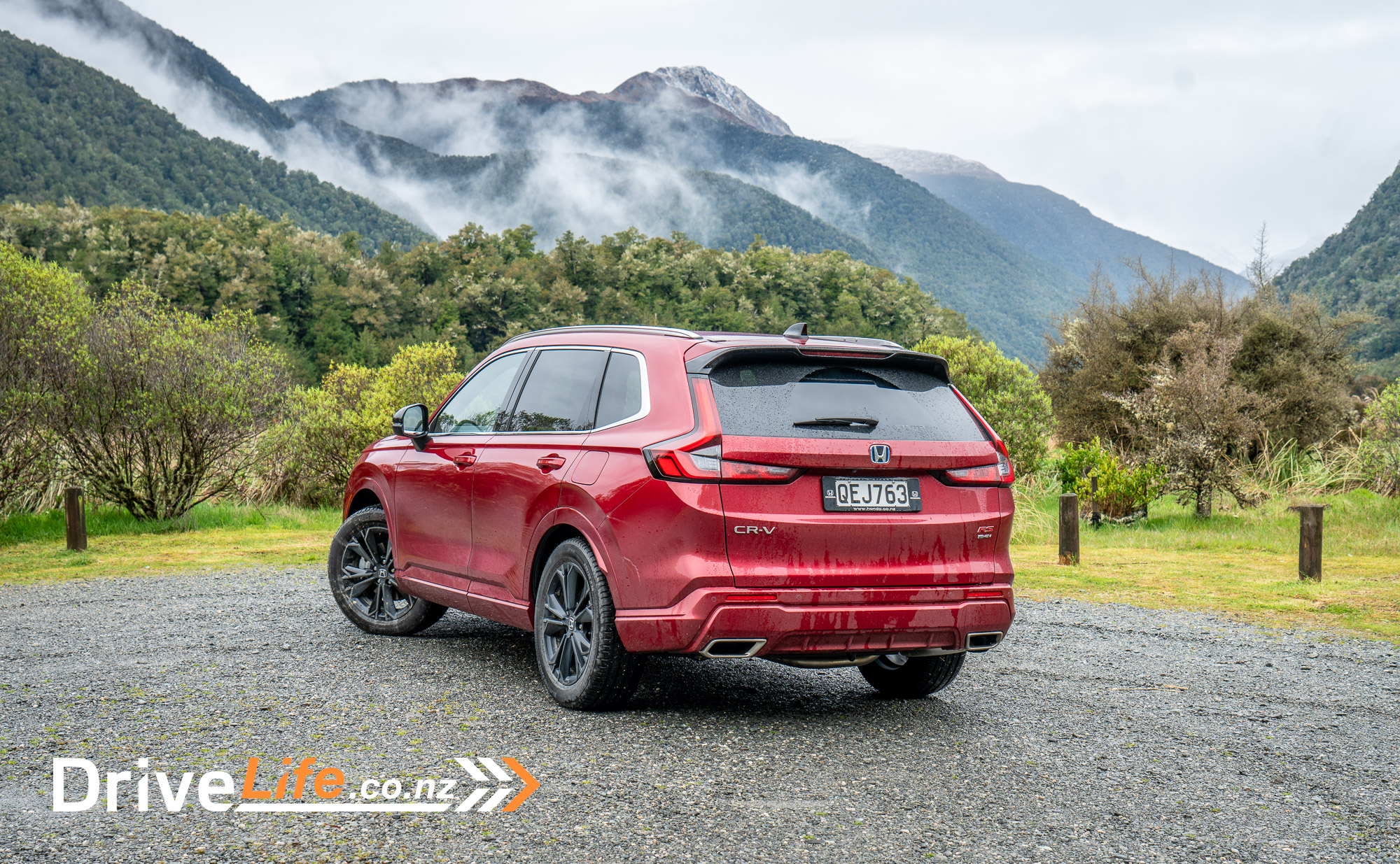
The better question is how this mechanical electric-motor trickery works in practice. Fortunately, the inland route ahead of us would provide us with ample opportunity.
With 335Nm of torque on tap, the CR-V RS thrusts ahead with convincing pace, reaching 100 kph in just over 7.5 seconds. Being predominantly electric motor driven, its performance delivery is exceptionally smooth. Honda’s e-CVT performs a near seamless blend of the petrol engine, maintaining a powertrain smoothness on the open road. Honda’s even incorporated a fairly fruity, albeit fake, engine note that sings out when you mash your foot down.
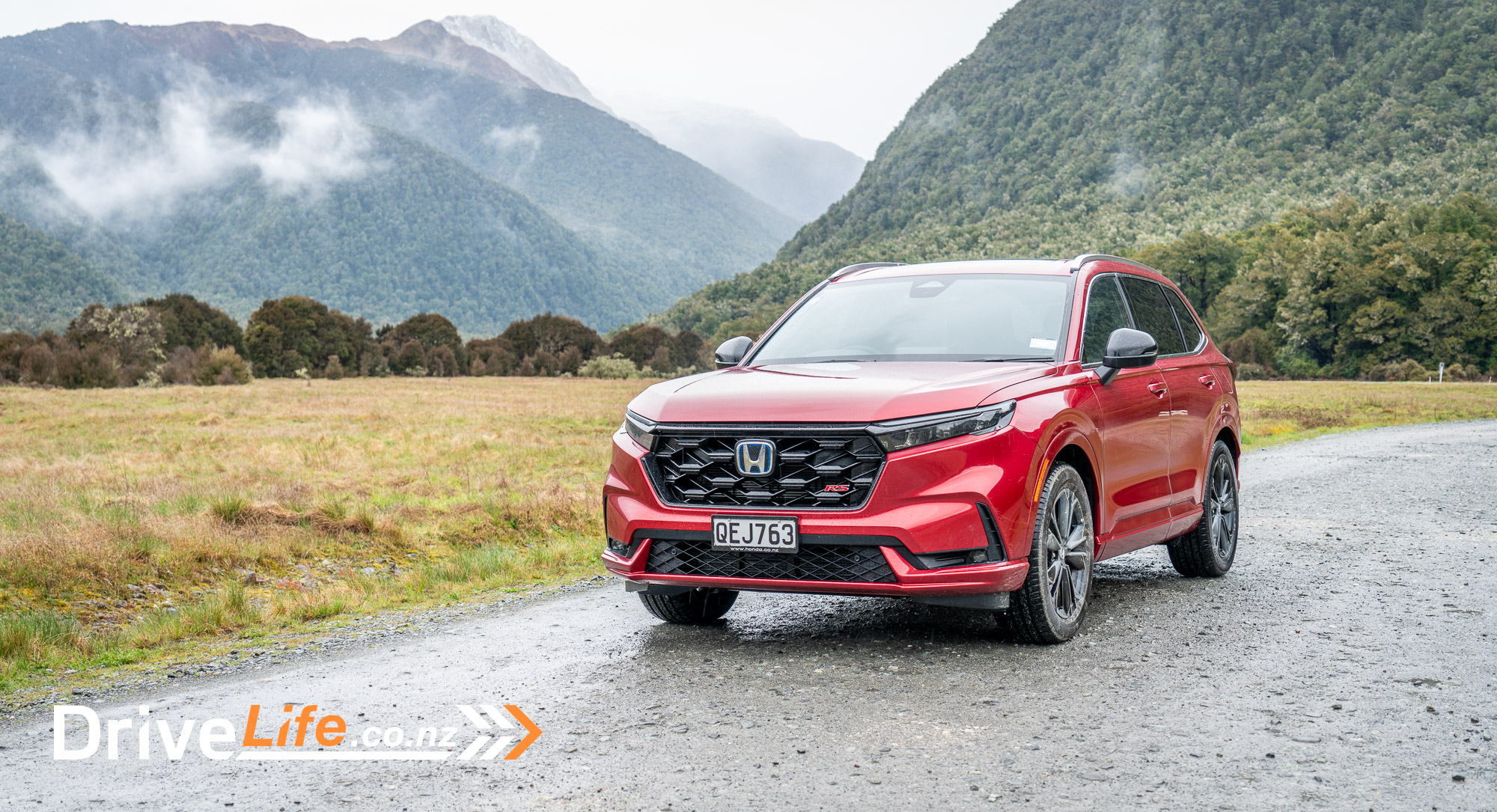
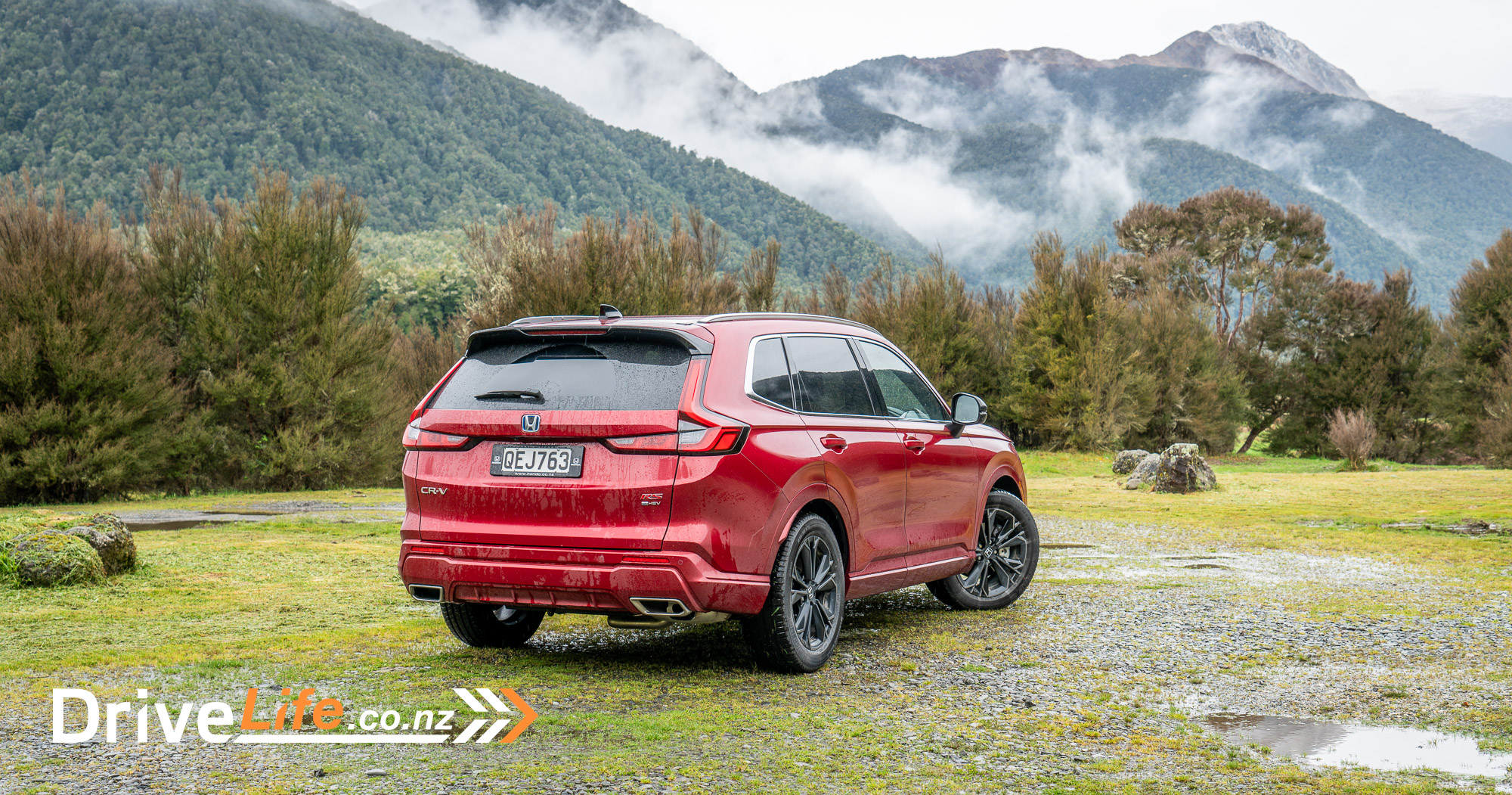
The whole electric-motor-clutch-on-petrol fandango works remarkably well in practice. Although, the performance delivery can feel a tad synthetic. You hear an engine running, but it delivers most of its power in an EV-like way. You do adjust to this, but it might feel a tad strange when you encounter it for the first time.
Anyway, this motor is primarily for efficiency and it does exactly that. Even with some spirited driving, we returned a fuel consumption figure of 6.9L/100kms. Impressive for a chunky SUV.
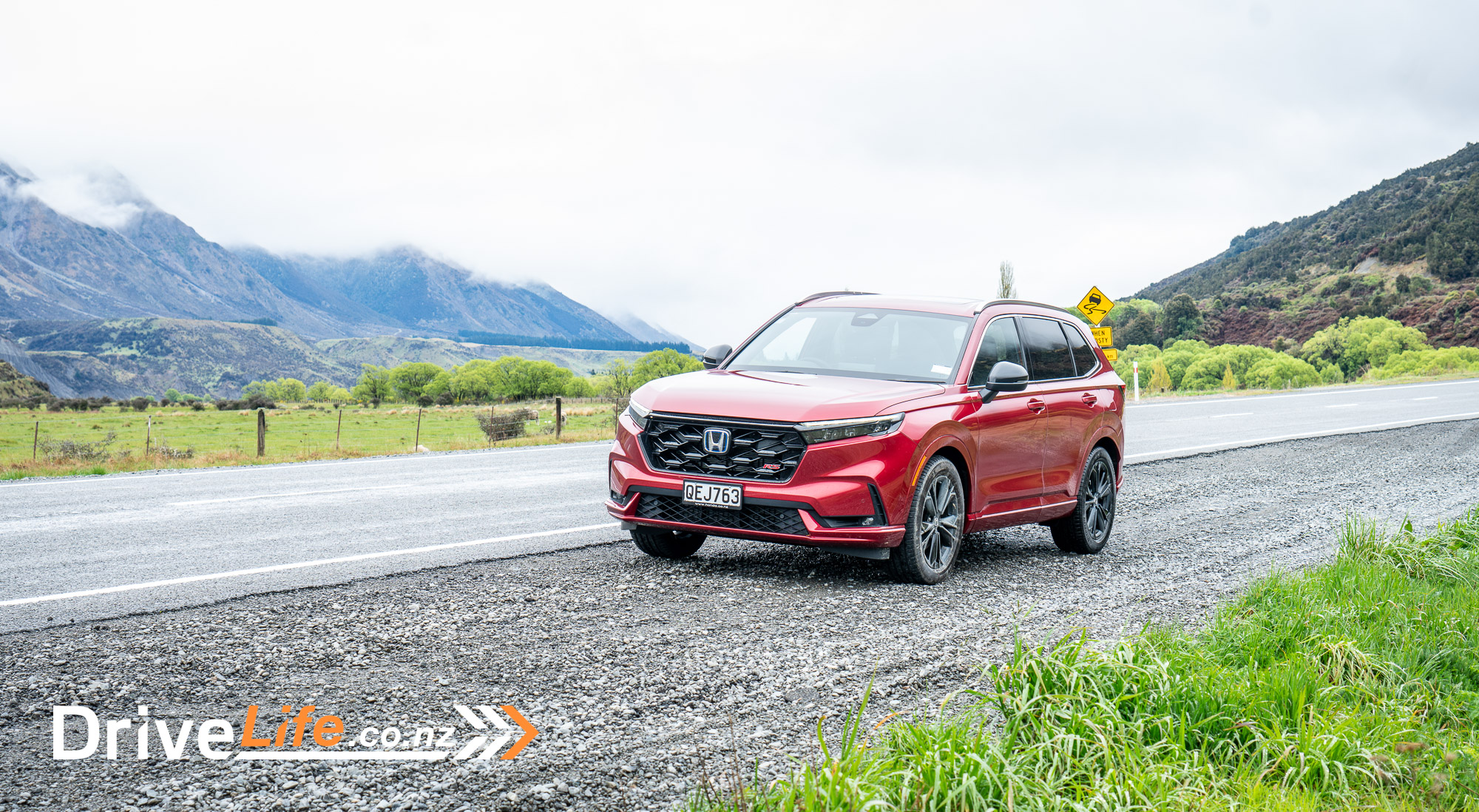
Even more impressive is the handling of the new-gen CR-V, which the twister sections of SH 65 and SH 7 quickly revealed. The new-gen CR-V’s body has been made 15% stiffer, the wheelbase is longer and the wheel track is wider. All this, amongst other chassis tweaks, has allowed Honda to make notable handling improvements, particularly in body control. Tight and technical sections were dealt with tidily and there’s fewer unbalanced secondary motions in faster corners. It’s a substantial improvement over its predecessor.
The talk of chassis stiffness might make you believe that Honda’s has ruined the ride quality, but that’s far from the case. The CR-V still has excellent ride quality, making tidy work of the often patchy and pot-holey pieces of state highway.
Steering is another quality that Honda consistently hits the nail on the head. The CR-V’s steering is direct and weights up with just the right amount of resistance.
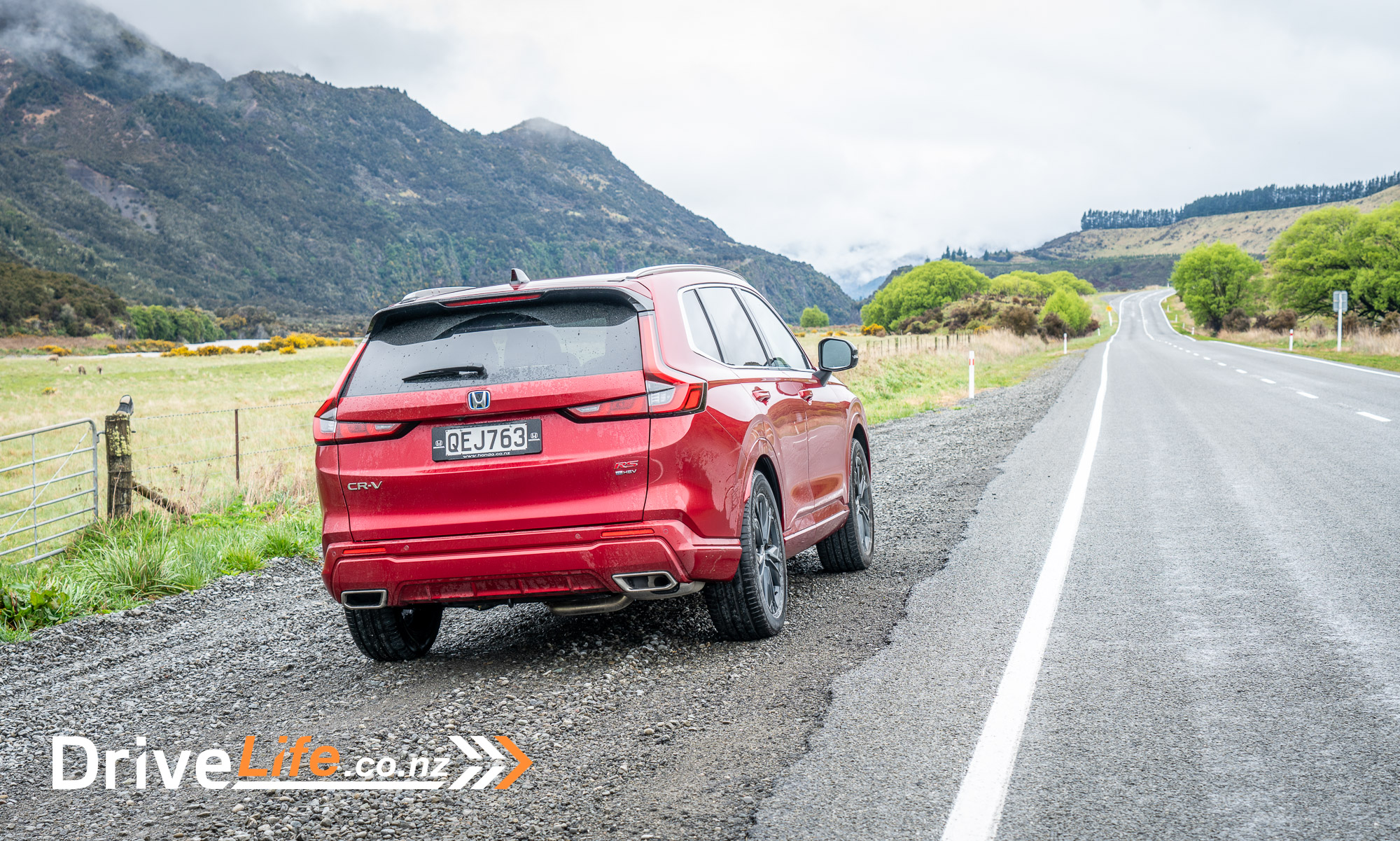
Between all of this, the CR-V handles sharper and holds the road better than many crossover SUVs. It’s better than the RAV4 and the Outlander, for sure.
The only irritation wasn’t actually to do with the chassis, but instead, the software. The lane-departure mitigation software was a bit too intrusive on narrow sections of road, so we had it switched-off for most of our journey.
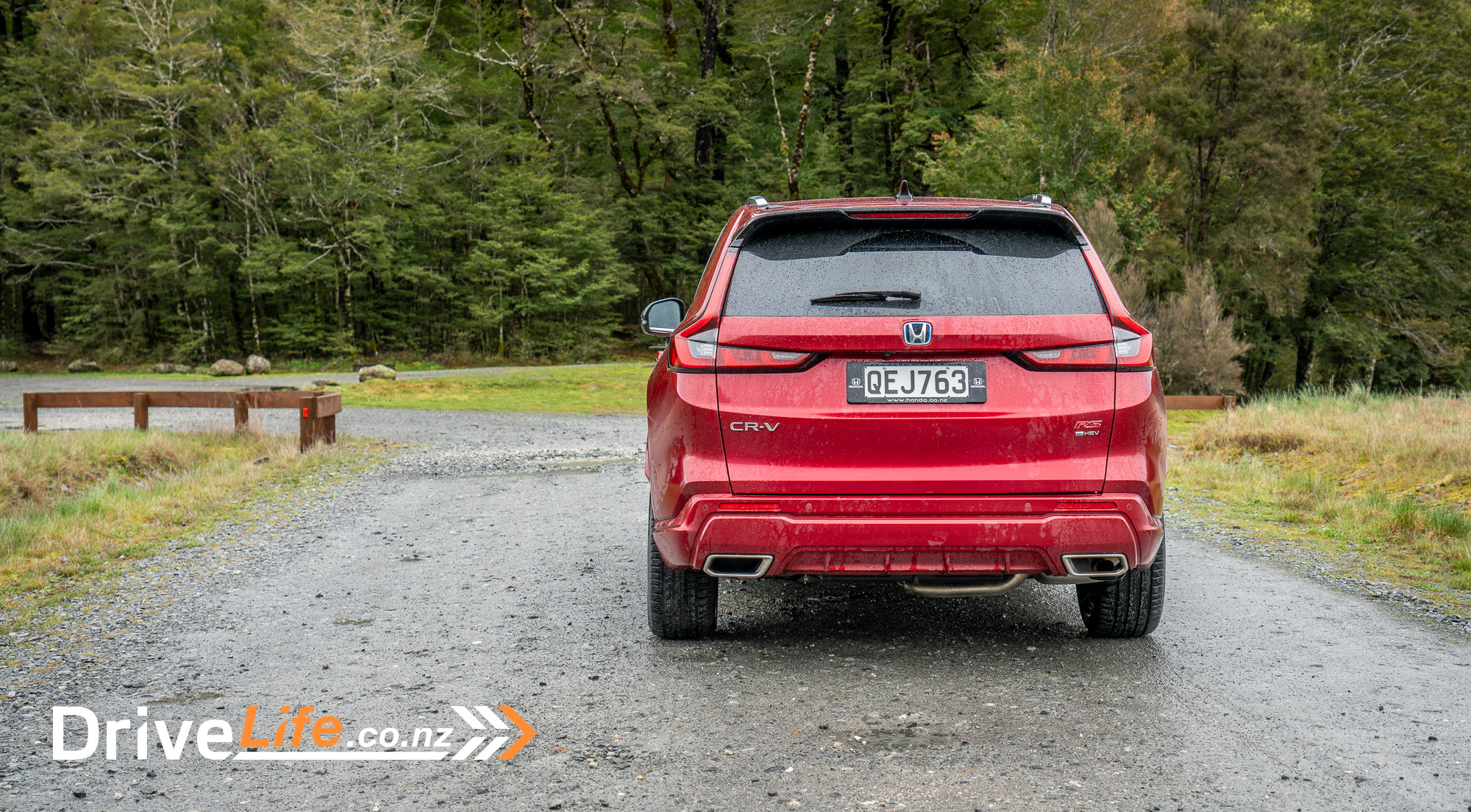
2023 Honda CR-V: The Drive – CR-V Sport 7
After our first stop and spot of lunch at Hamner Springs, we headed into the next leg of our journey to Christchurch. For this, we’d swapped into the CR-V Sport 7.
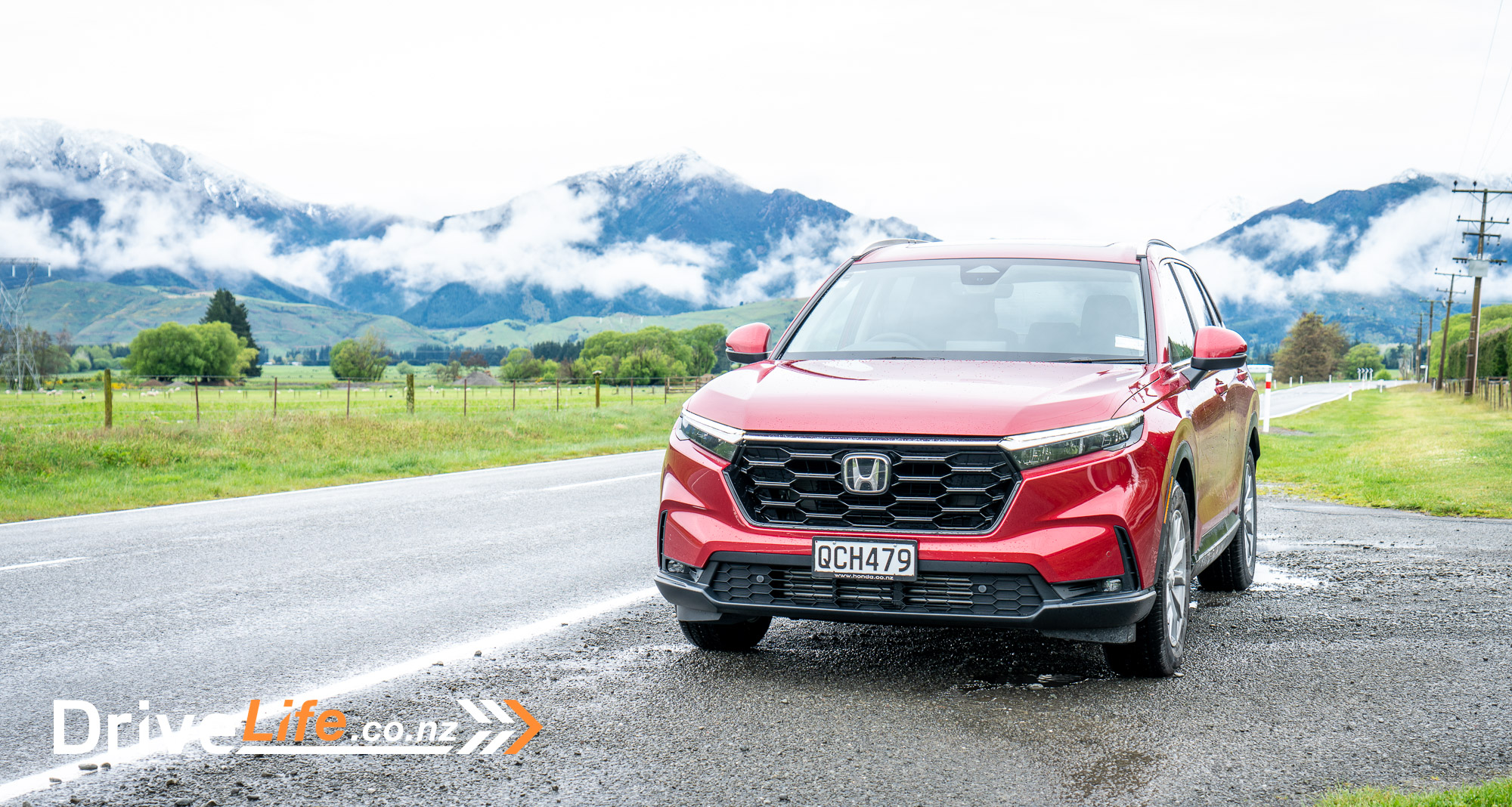
The CR-V Sport 7, and the entry-level CR-V AWD, utilise Honda’s 1.5L turbocharged petrol V-TEC engine, which is carried over from the 5th generation car. Of course, Honda aren’t the sort to just copy and paste the old motor, dust their hands and say “job done”. For the 6th generation CR-V, Honda has provided a new turbocharger for improved response, meaning peak torque is available 300 rpm sooner. There’s also been tweaks to the engine balancing, adjustments to the exhaust, and fresh tune and better cooling for the CVT gearbox (this car has a conventional CVT).
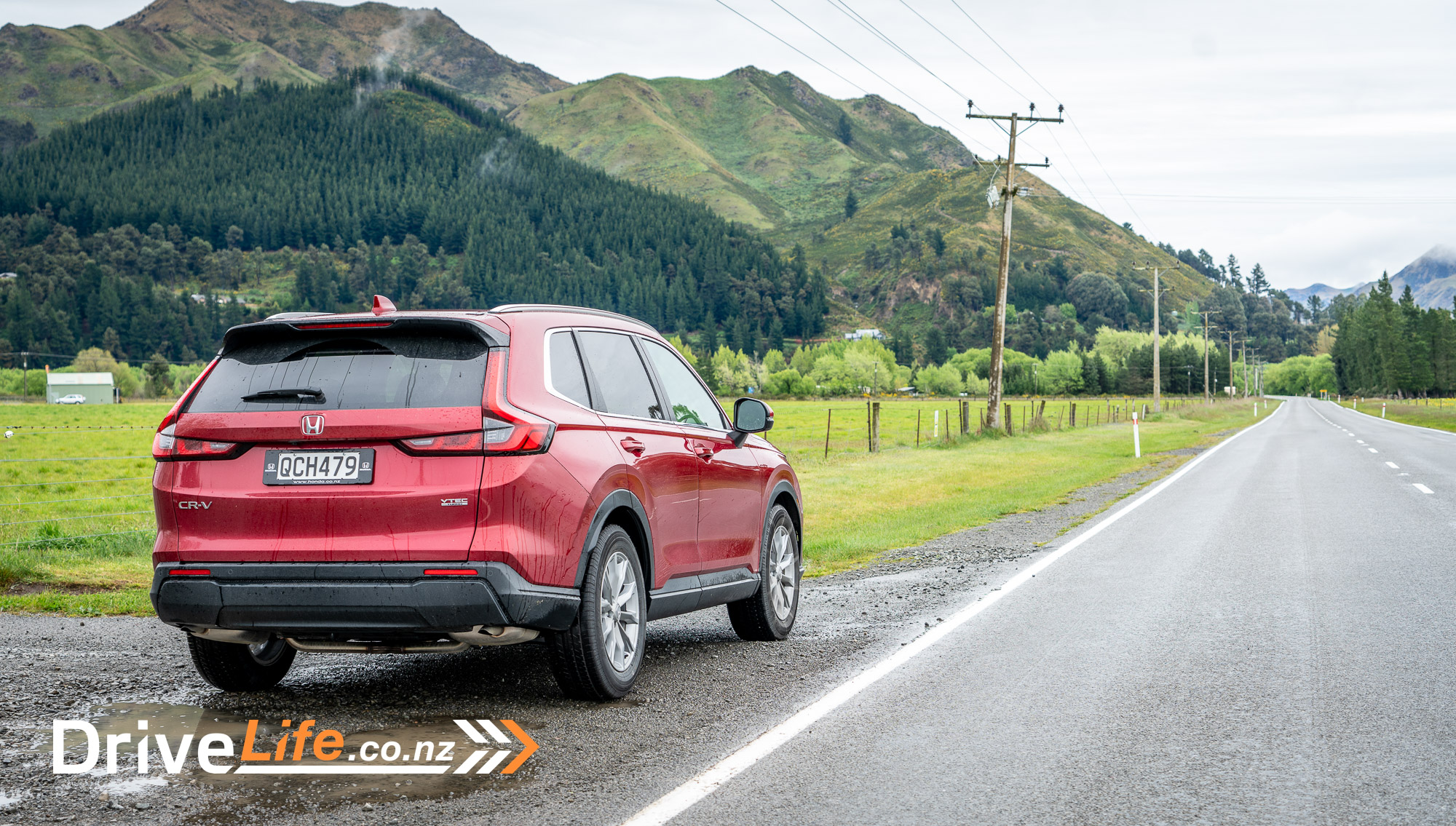
Minor changes on paper, sure. But, these tweaks do add up. The performance of this 1.5-litre engine feels brighter and sharper than before. This 1.5-litre was never a powerhouse, and it does carry quite a big body. Though a prod of the throttle delivers a healthy push of performance, meaning that tackling the open road doesn’t feel cumbersome in this CR-V.
Technically speaking, the CR-V Sport 7 should be the least dynamically competent car in the range. It has the “base” engine, it’s the only CR-V that’s 2WD, and it’s also heavier than the CR-V AWD (but not by much).
Theory, however, doesn’t dictate the course of reality. Besides not having on-demand all-wheel drive, the CR-V Sport 7 is essentially the same underneath, benefiting from all of Honda’s new-generation chassis updates.
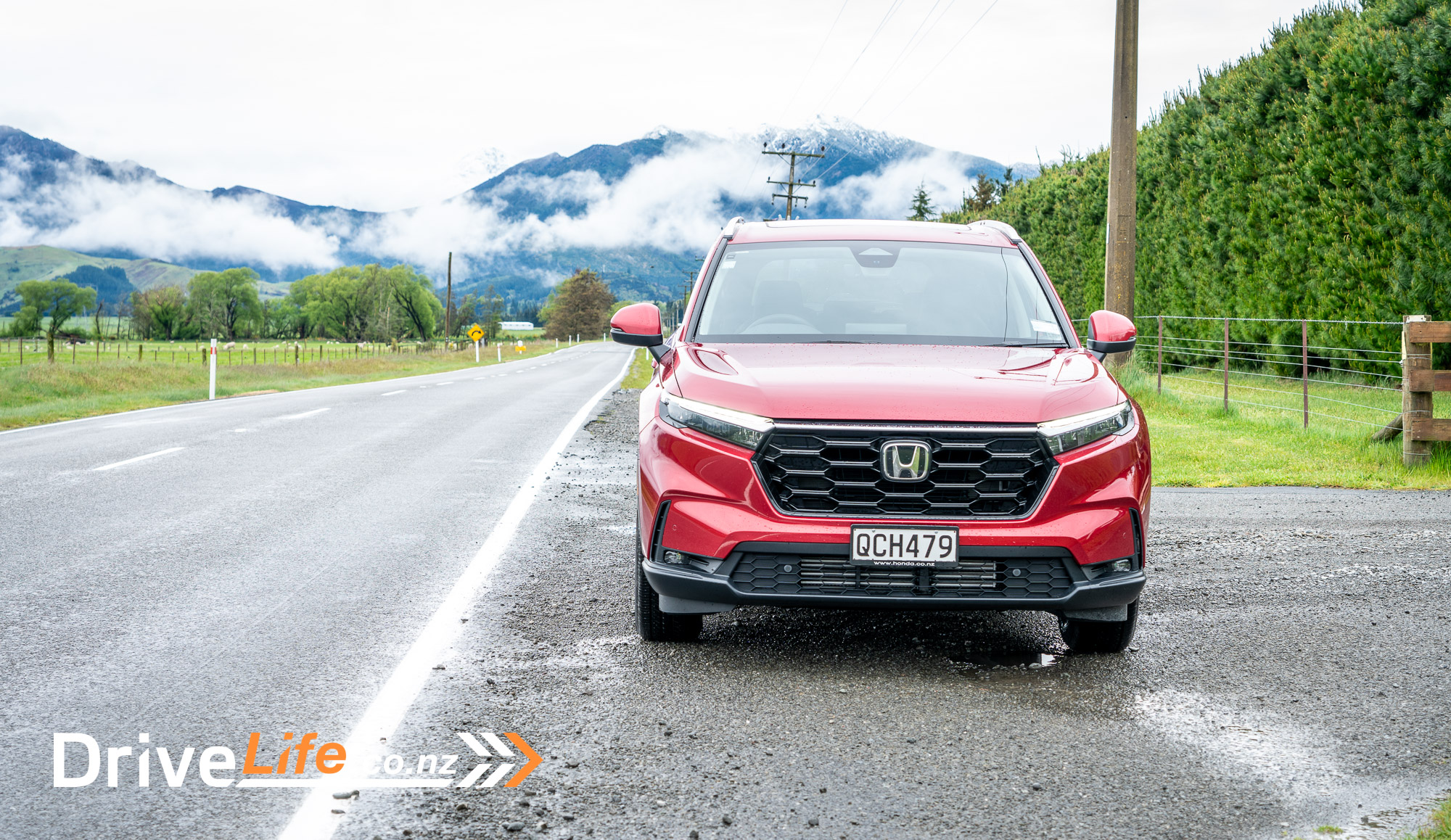
Sure, having the AWD torque split when needed is advantageous when the going gets tough, but the CR-V Sport 7 handling is proof that having the kid-carrier isn’t necessarily a compromise.
Although the hybrid, or the e:HEV, is the premium powertrain in the range, this turbo 1.5-litre is a refined motor. It also feels more organic with its power delivery, compared with the e:HEV. Our fuel consumption on this final leg of the journey wasn’t bad either. We achieved 8.4L/100kms.
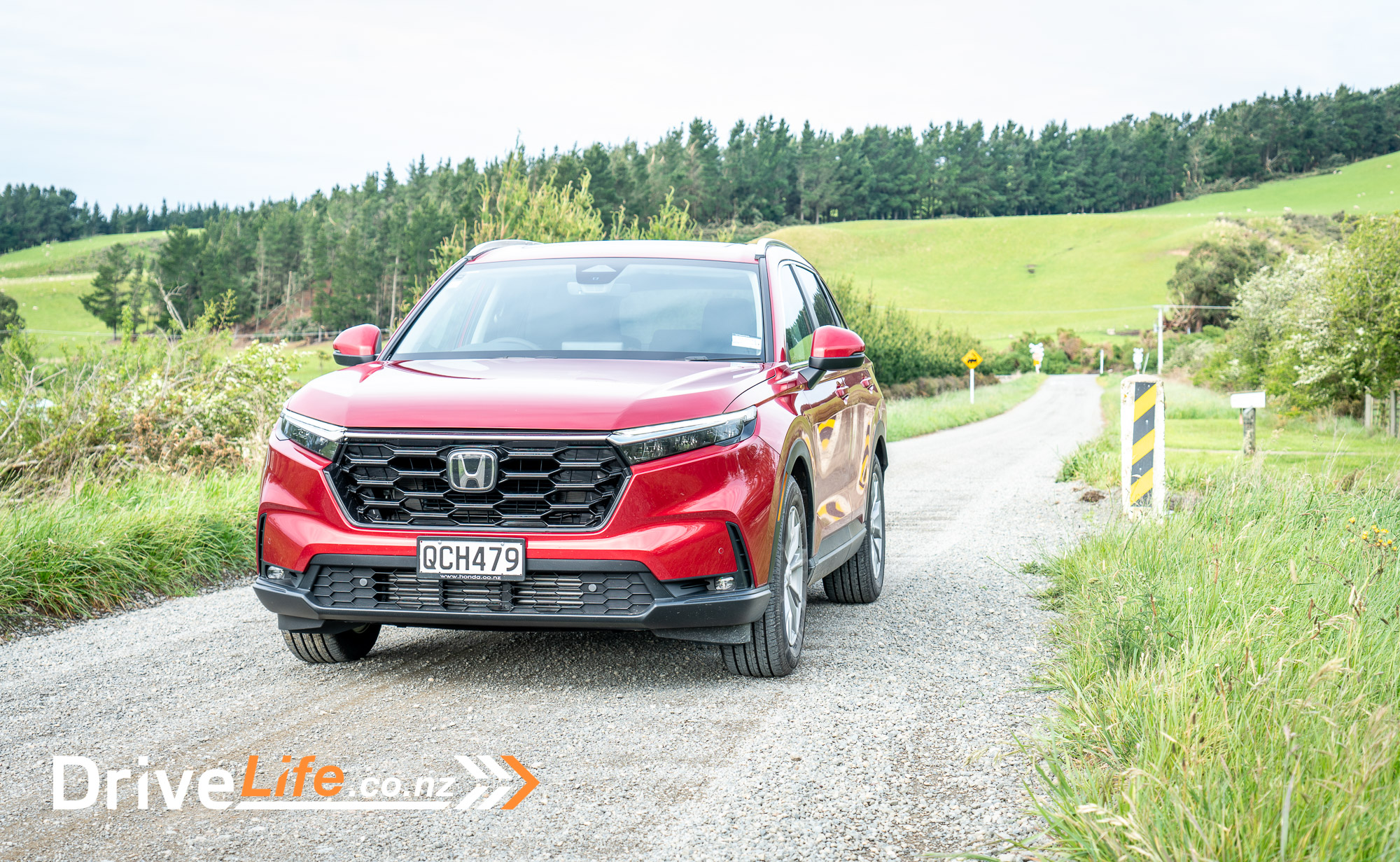
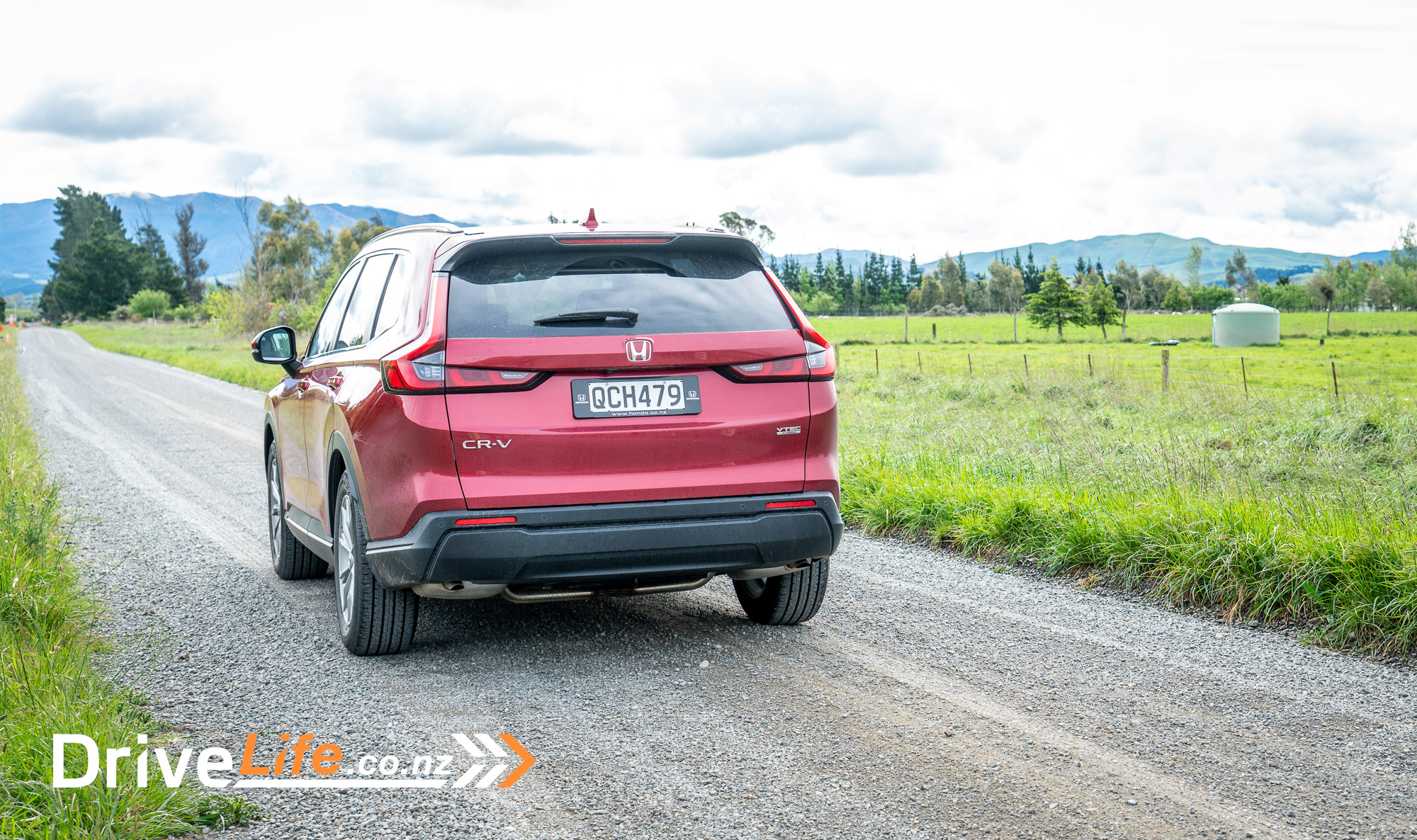
2023 Honda CR-V: Final thoughts
So, one South Island tiki tour later, what are our first impressions of the new CR-V?
Well, in a market flush with RAV-4s and Outlanders, Honda does have its work cut out for the new CR-V. Although, the CR-V is more than just a talented newcomer. Instead, it represents Honda’s culmination of decades of experience of designing and building crossovers. The 6th generation CR-V is an engaging crossover to drive, and does so while ticking all the practicality, livability and technology boxes for the 2023. It’s a solid combination, in which Honda customers will find a lot of value.
In short, if I were Toyota or Mitsubishi I’d be looking over my shoulder, because the new Honda CR-V is a serious contender.
